This is the first part of a two part series. The second part can be found here.
The first thing I noticed were the lack of topes (speed bumps) as we left the San Luis Potosi airport in our rental car. Starting any mezcal adventure in Oaxaca comes with a steady supply of topes, marked and unmarked, but we weren’t in Oaxaca and this was the first sign of how different things would be.
The trip to San Luis Potosi was the perfect alignment of schedules, of my own, of Almamezcalera’s Erick Rodriguez and of Oaxacan based Mezcalista Ana JB. The Dia del Mezcalero program provided the perfect opportunity to make a big Mexican trip and miraculously, everyone else’s schedule aligned. We had an aggressive four day itinerary of what I began calling the Waterfalls and Mezcal adventure, not really having any idea of what that would entail – lots of driving, which thankfully in San Luis Potosi is not a problem. The economic prosperity of the state, from mining and more recently from not just one but now two auto-manufacturing plants – General Motors and BMW have plans in the capital city San Luis Potosi. The highways are a dream – clearly marked, incredibly well paved, in fact in better shape than most of the roads found in my Bay Area.
The state ranks 19th when it comes to total area, though it seems much larger because of the distinct geographical areas. The state is divided into four regions – La Huasteca, the eastern verdant and jungle region; the Medio, also verdant, where the bulk of San Luis Potosi’s agriculture is centered; the Centro, where the city of San Luis Potosi sits, on the edge of verdancy and desert; and then finally, the Altiplano, the high desert northwestern part of the state where mining dominated in the past and where mezcal is produced. There is no bad view to be had, and the city of San Luis Potosi sparkles with old world, colonial grandeur and emerging modernity on its city edges.
Our first stop was in the city at the state tourism office where we met up with Rosy Guitierrez for a breakfast of gorditas stuffed with various guisados. We went over a couple of itineraries before making the final decision of where we would begin – waterfalls or mezcal? The waterfalls won out and we jumped into the car for the five hour drive to La Huasteca.
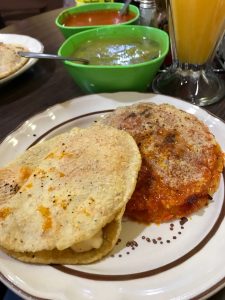
The bucket list journey
Traveling with Erick is like traveling with your own Encyclopedia set. He is a fountain of knowledge and explained the changing landscape, the history of aguardiente production (sugar cane distillation) in the state, staple crops, indigenous history, and how lard is used in every dish in San Luis Potosi. Side note, it seems there are some things that are universal and the presence of Doritos and Coca Cola on a road trip are two of those things. Cultivated green valleys and rolling hills gave way to rocky mountains and large trees. The air went from hot and dry to hot and humid and before we knew it, we had arrived in the town of Aquismon and hiking trails that would take us to some of the most incredible open caves in the Western Hempishere. In order to hike to these caves, you need to hire a guide – this is to ensure the protection of the parks, as well as provide jobs for the local indigenous population.
As we hiked to Cuevas Montetzulel, we passed various stands where young children were selling coffee and green vanilla beans. It was hot as hell, and, there were no waterfalls. As we entered one of the caves I had this crazy sense of deja vu only to realize that this might well have been the set for Indiana Jones and the Lost Ark. Traveling with the Indiana Jones of mezcal only cemented the feeling. I am not ashamed to say that I bailed on the final hike of the day and instead spent the rest of the evening chatting with a guide about the local tequila de caña, apparently the generic name for aguardiente. I asked him why they didn’t call it a mezcal de caña and he looked at me like I was crazy and told me flat out “because mezcal is mezcal and can’t be a tequila de caña.” Of course it made no sense unless you accept that tequila just meant something distilled.We spent the night in Aquismon, grabbing tamales and tostadas on the square in front of our hotel before retiring to our blissfully air conditioned rooms.
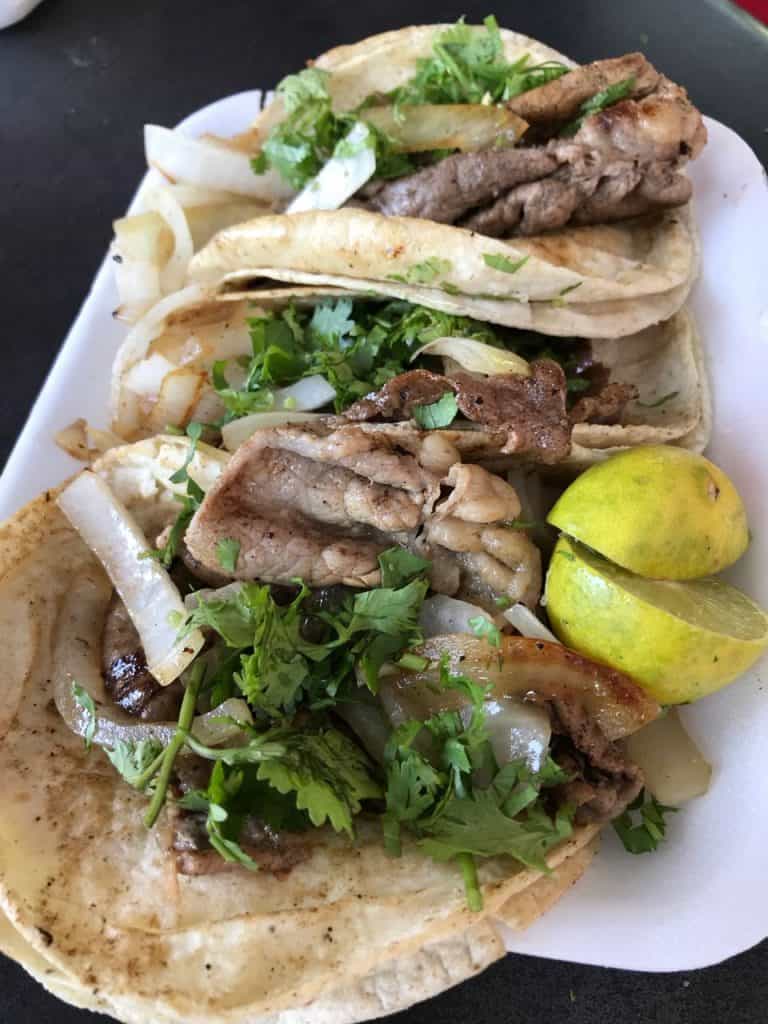
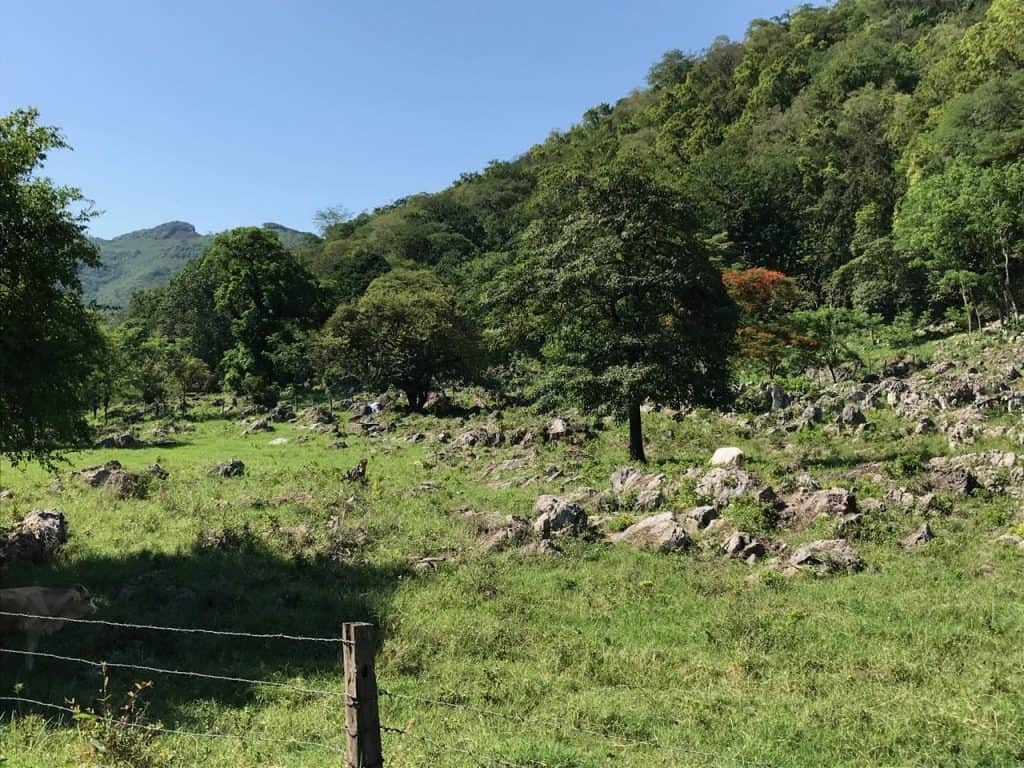
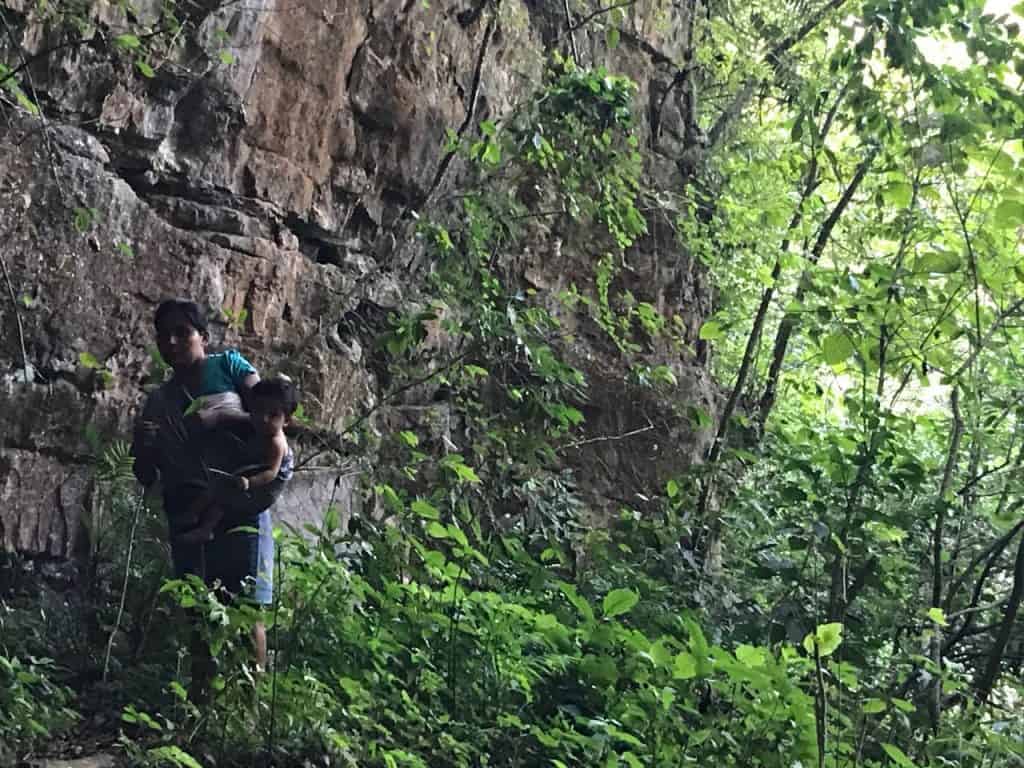
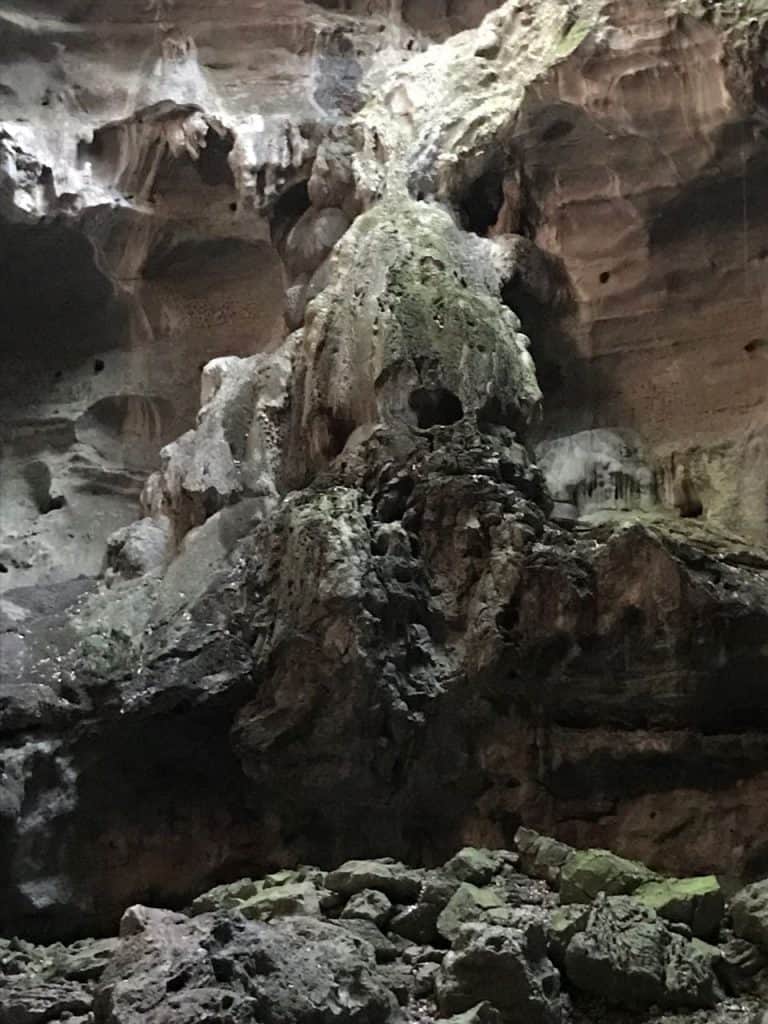
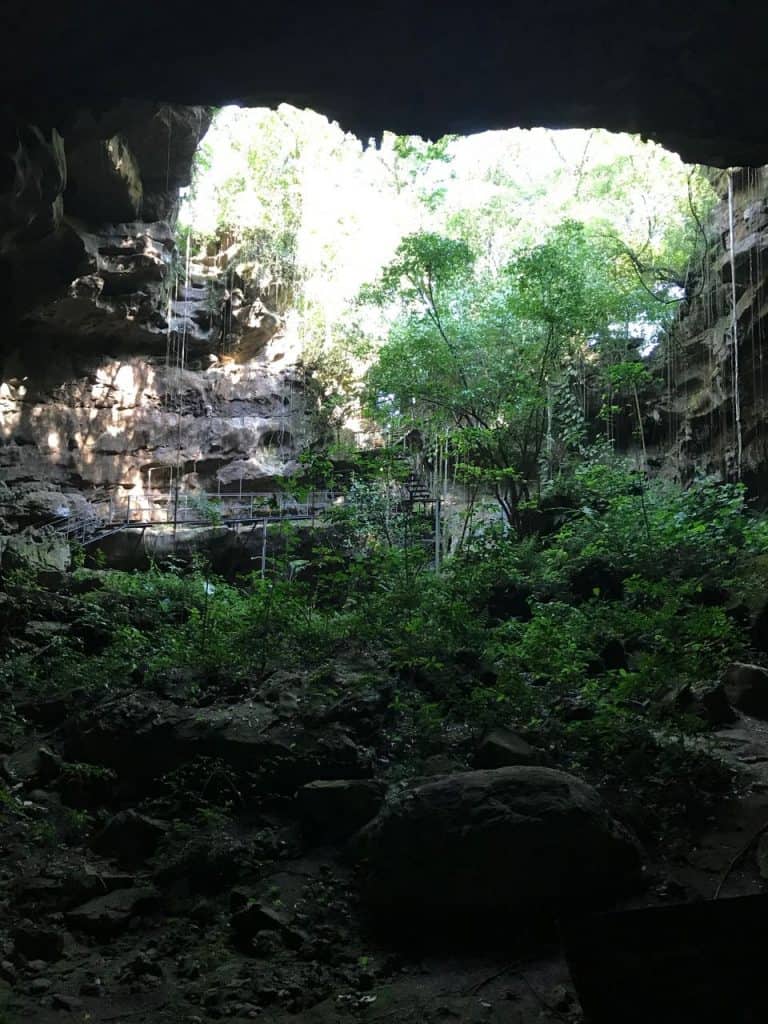
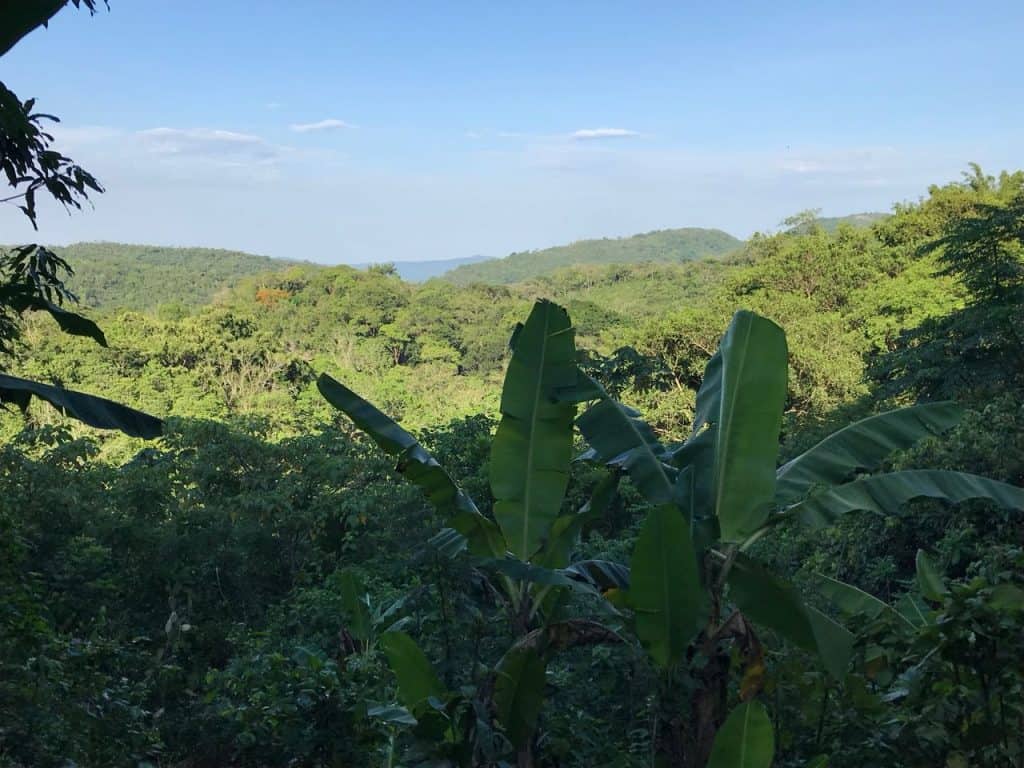
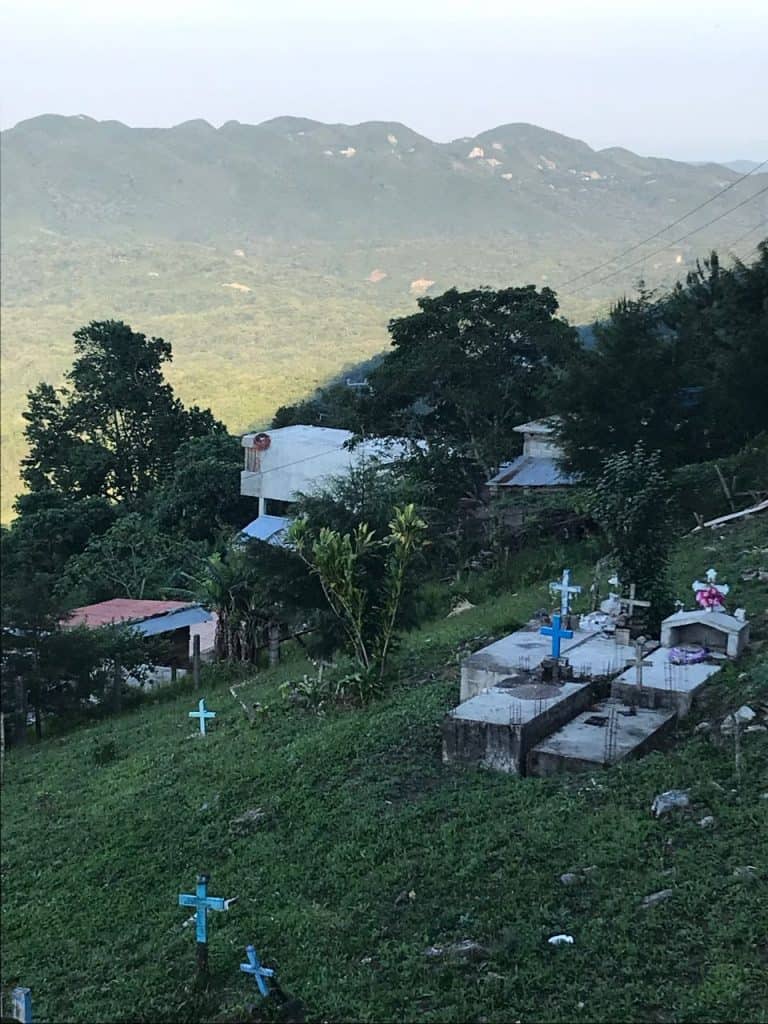
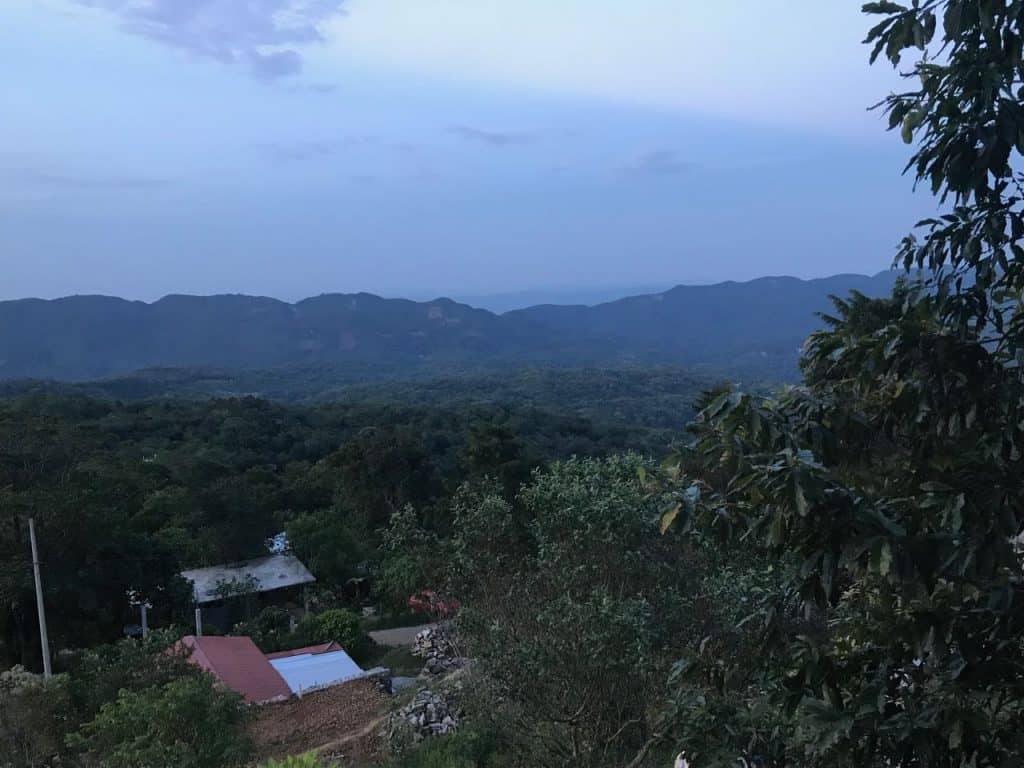
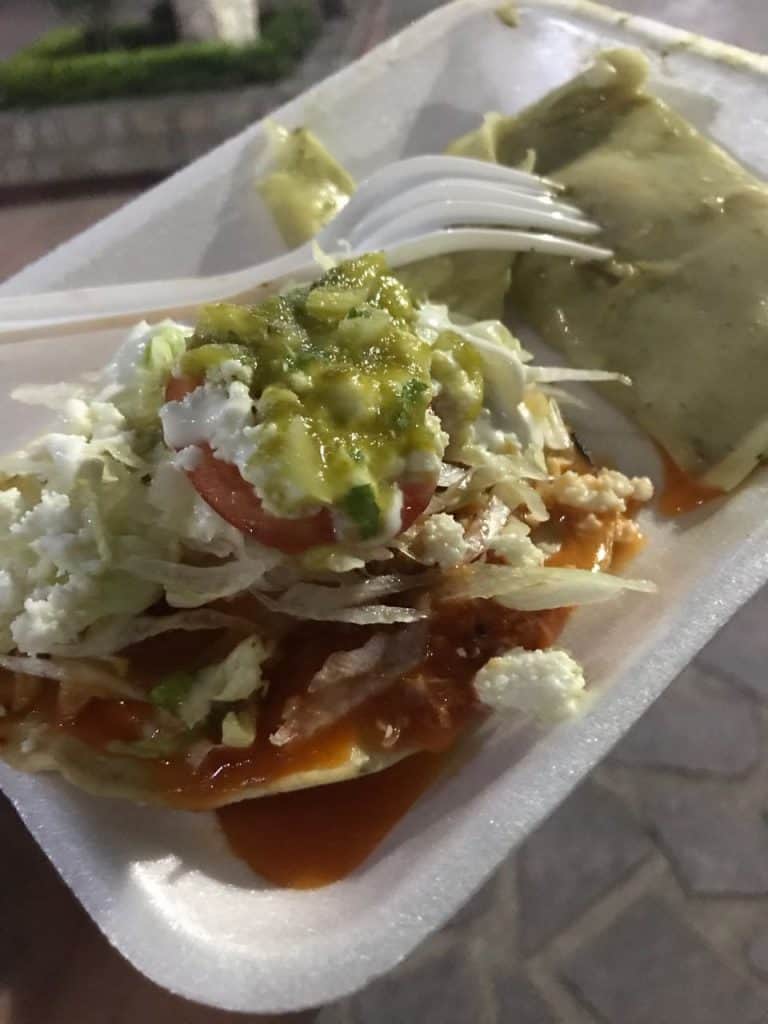
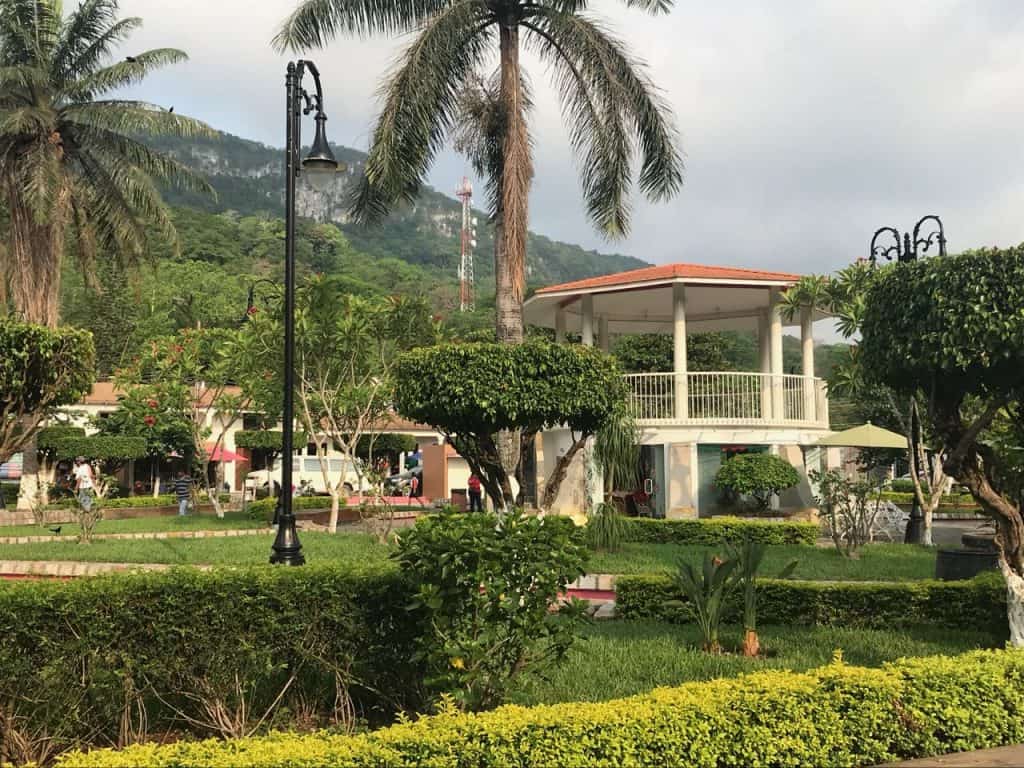
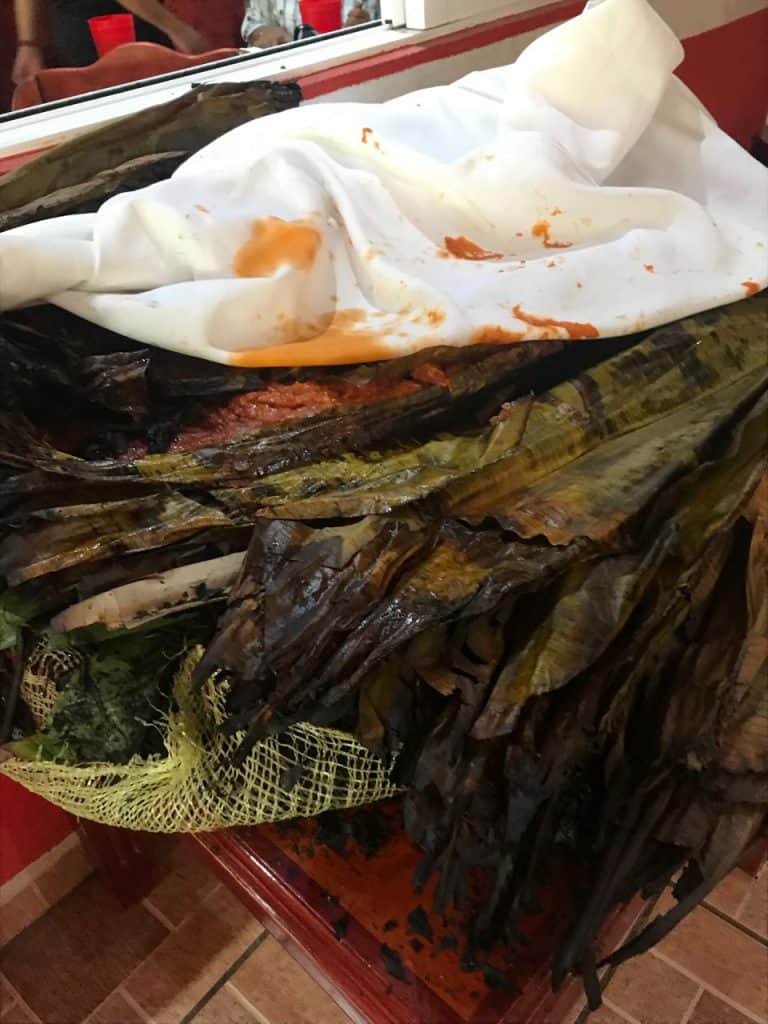
The next morning we got back on the road in order to get to Las Pozas in Xilitla, a sculpture garden built by surrealist artist named Edward James. In spite of never having traveled to South America, I felt like we were traveling through the jungle mountains of Colombia. The chatter of birds were a constant soundtrack, clouds of mist hovered among crevices, and towns that seemed close to tumbling down hillsides appeared out of nowhere. It dawns on me that every movie I have ever seen that involved some sort of jungle/mountain scene (Arachnaphobia, afore mentioned Indiana Jones, Jewel of the Nile…) may very well have been filmed here. Words cannot do justice to the incredible glory of both Los Pozos and Xitlitla. I have always had a lukewarm feeling about surrealist art, not really understanding it and not seeing beauty in it. With Los Pozos I realized that surrealists might have been the original punks with a DIY ethos and the constant question of why not.
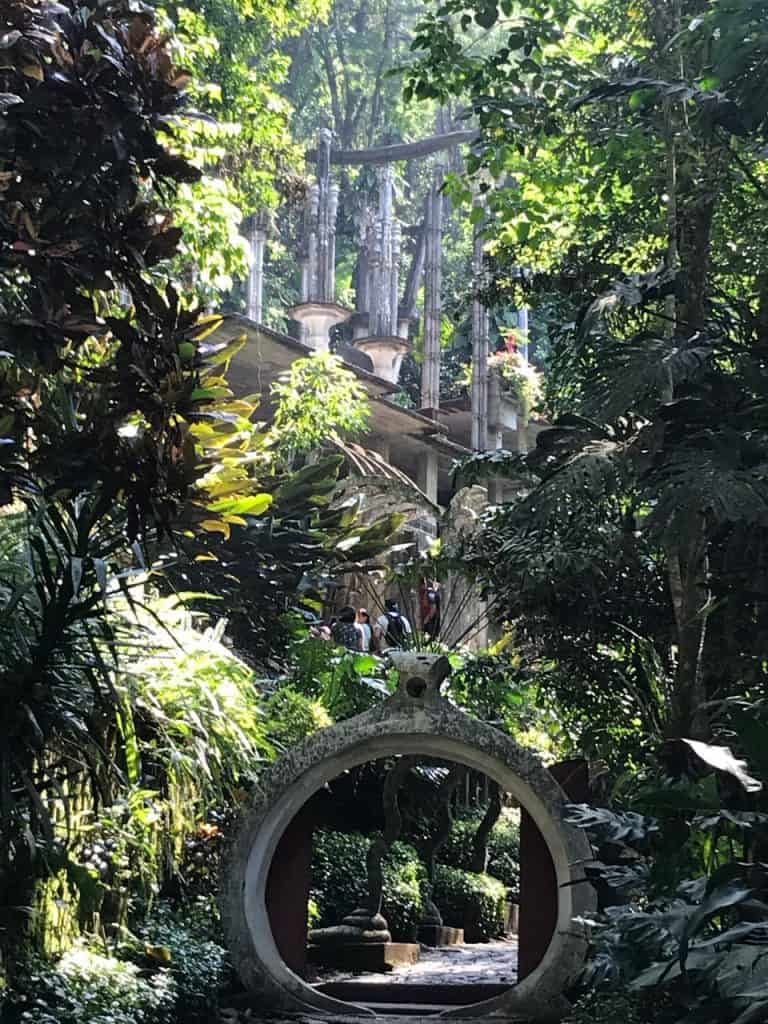
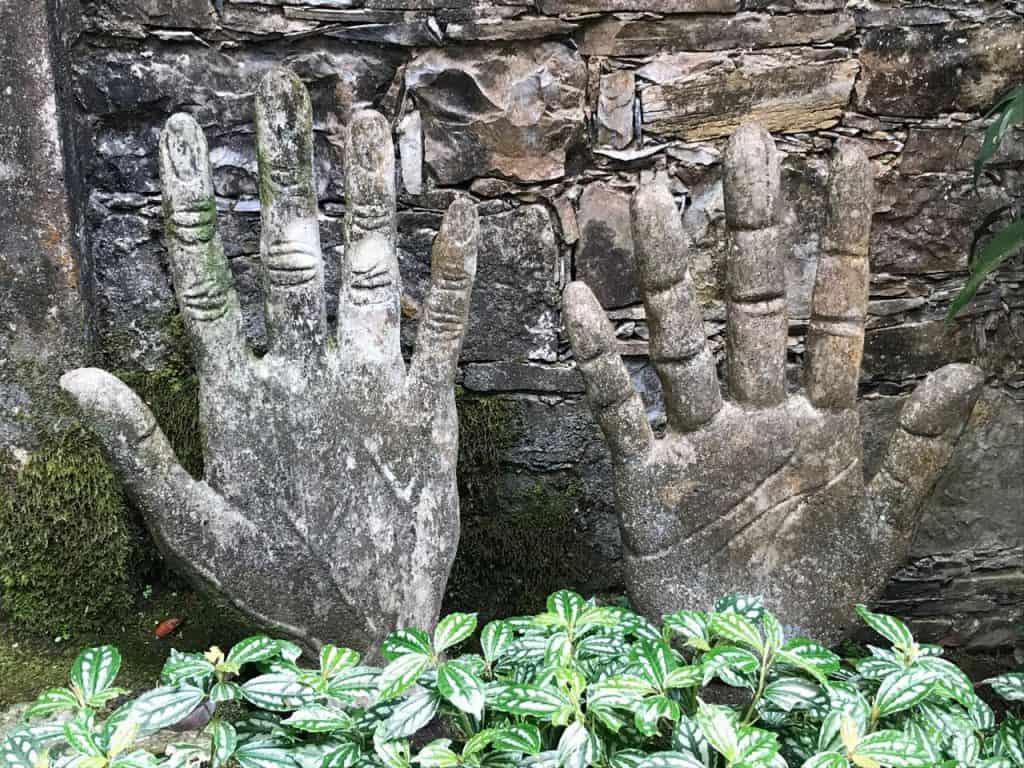
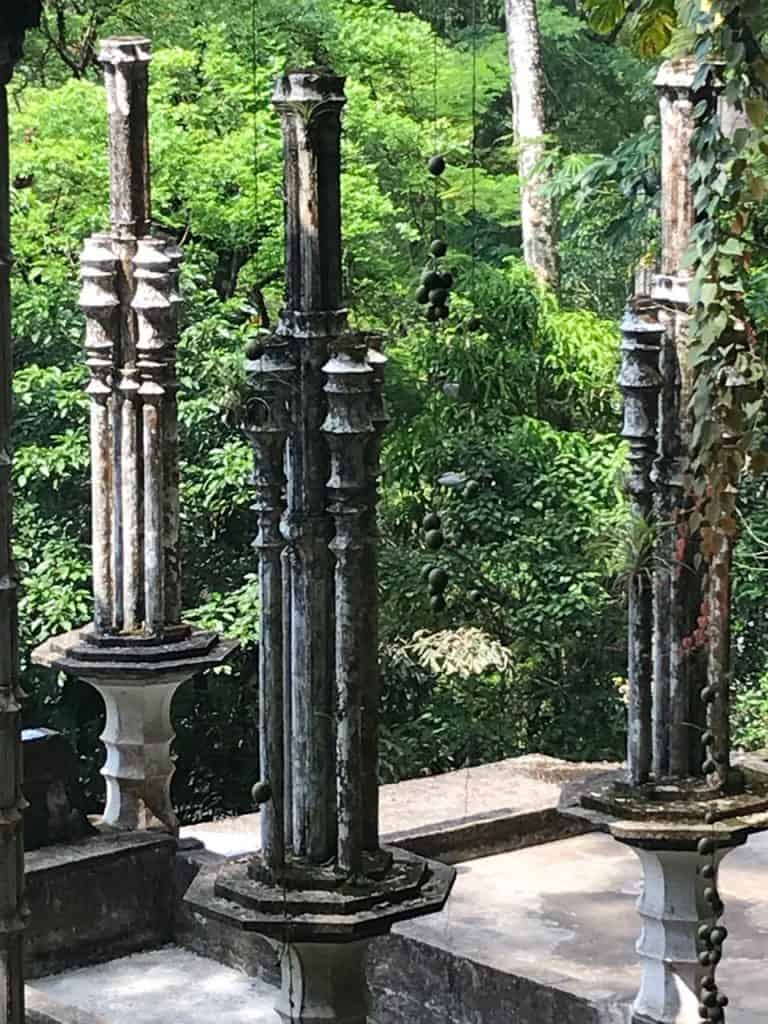
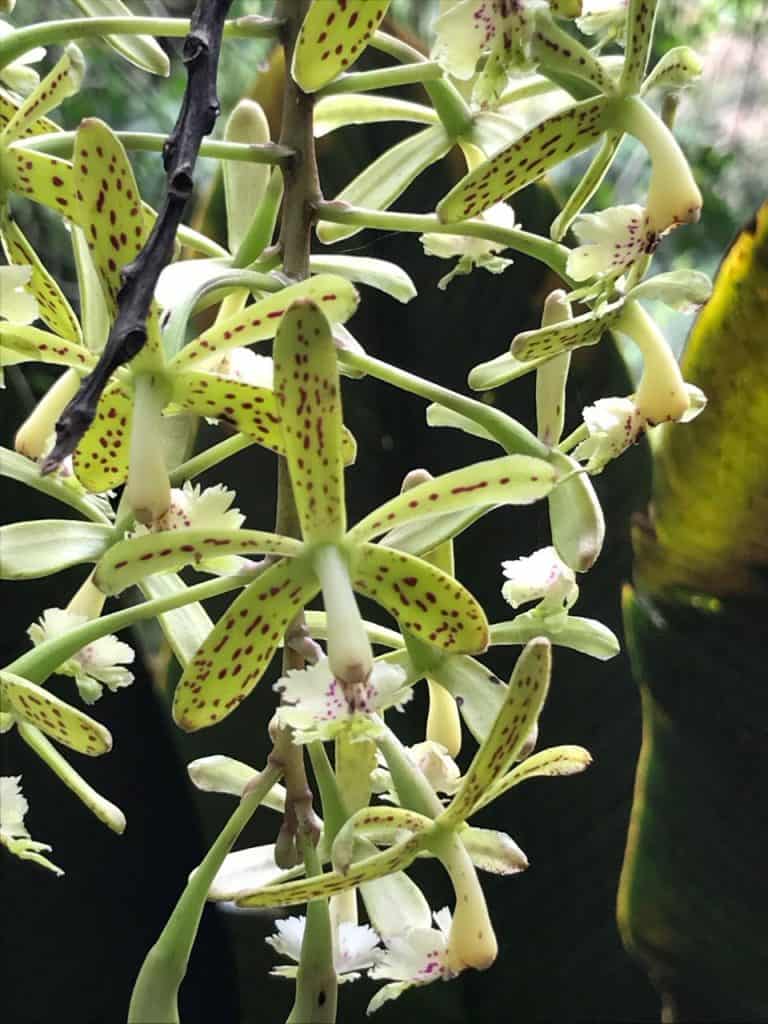
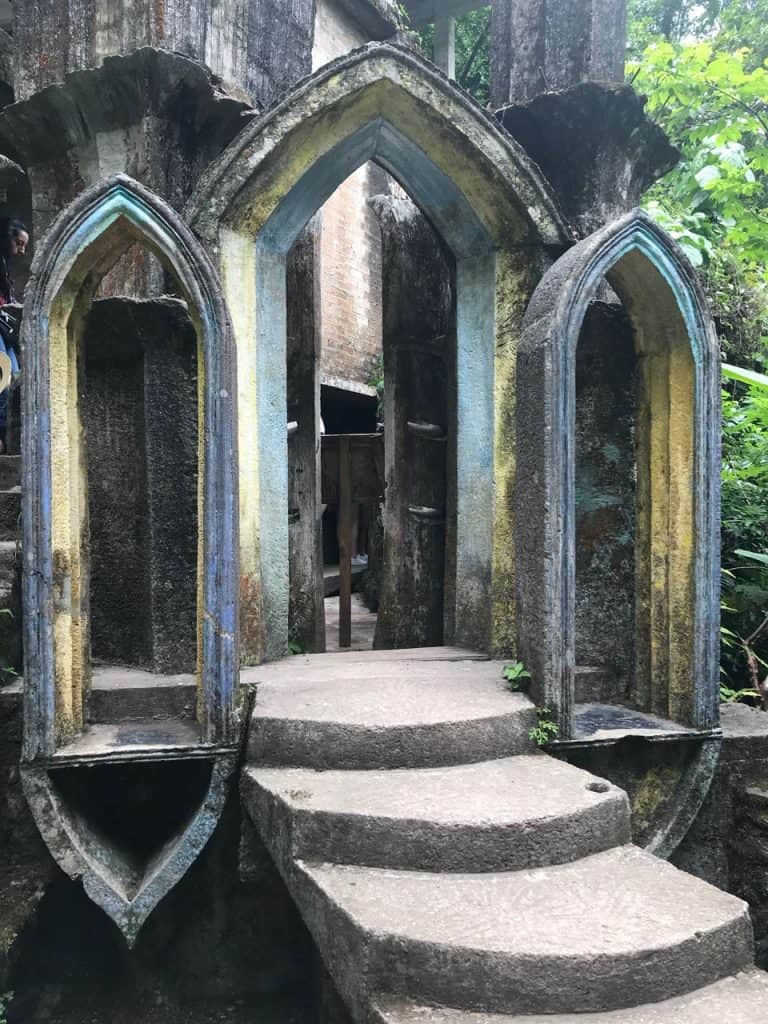
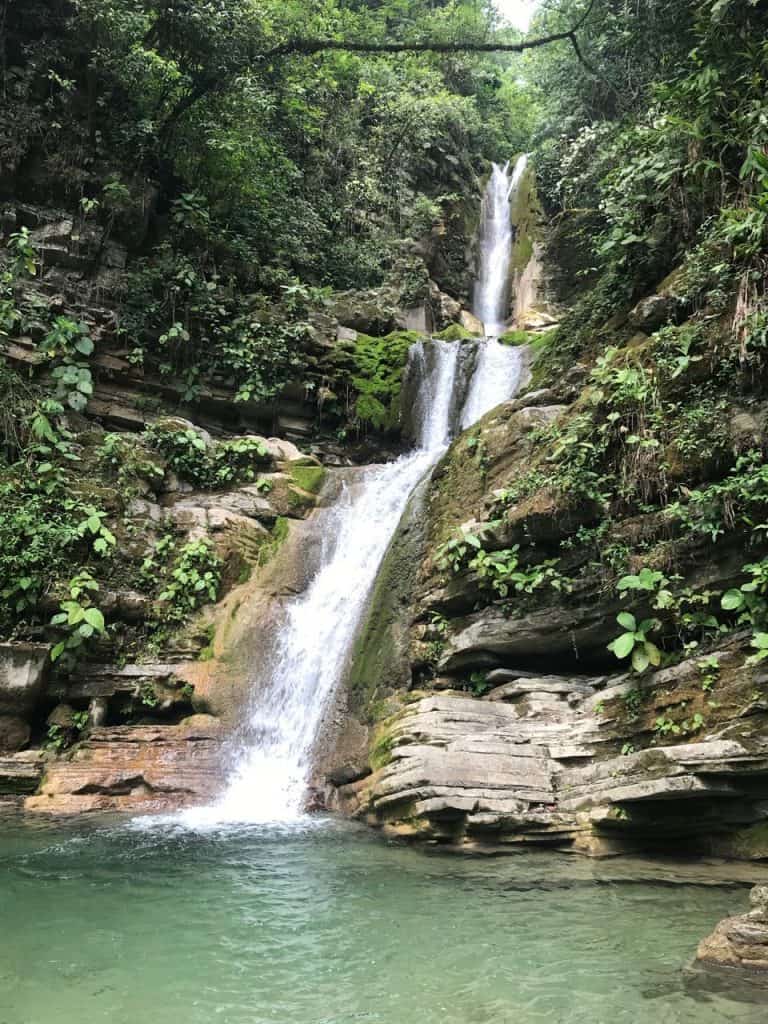
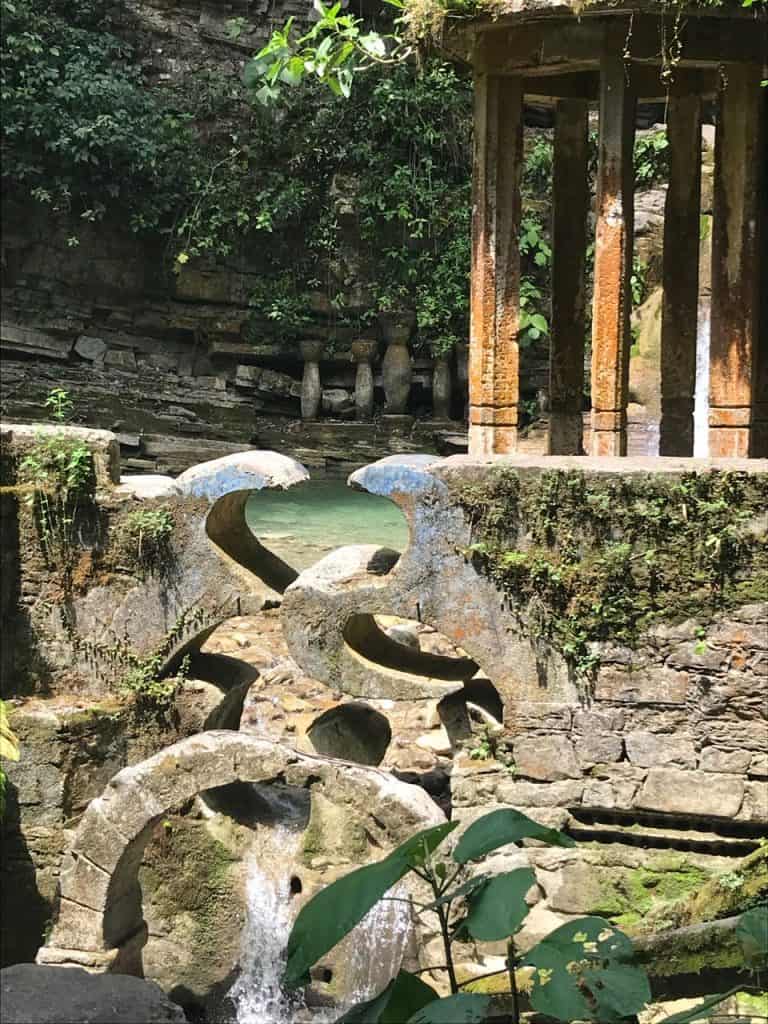
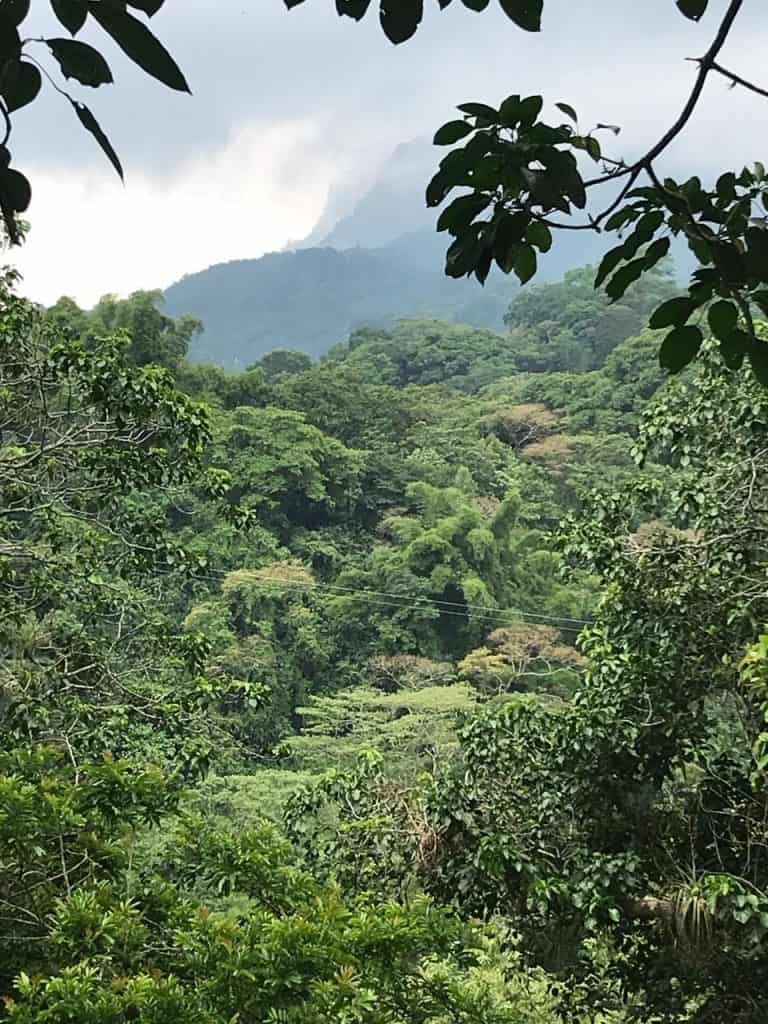
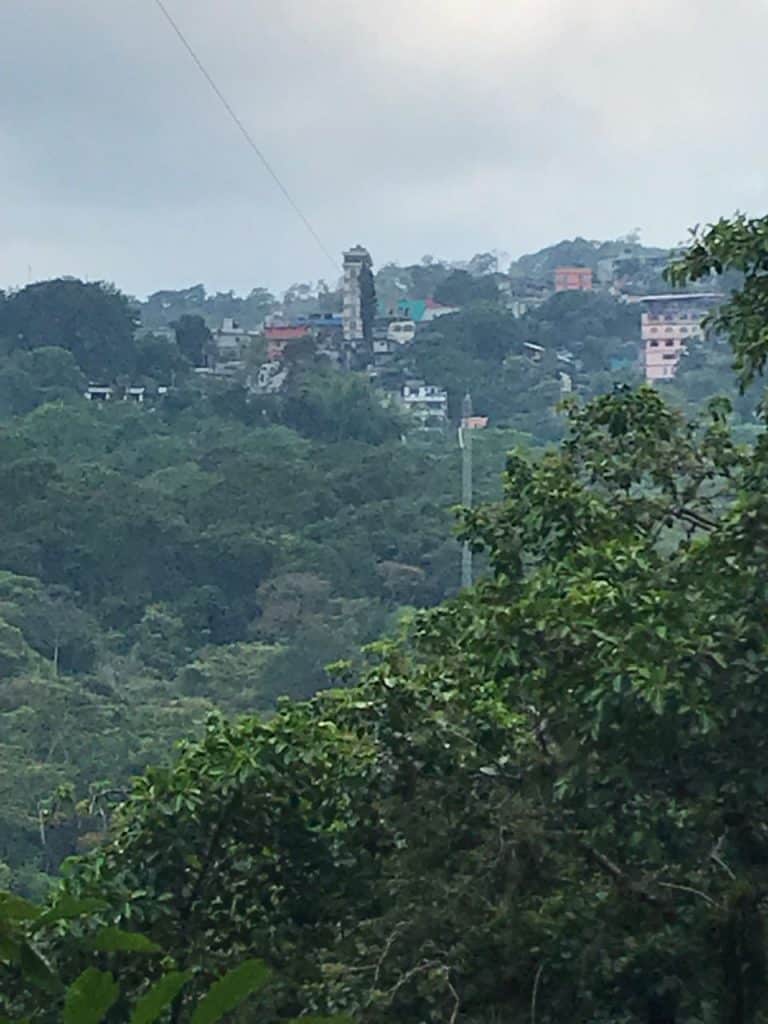
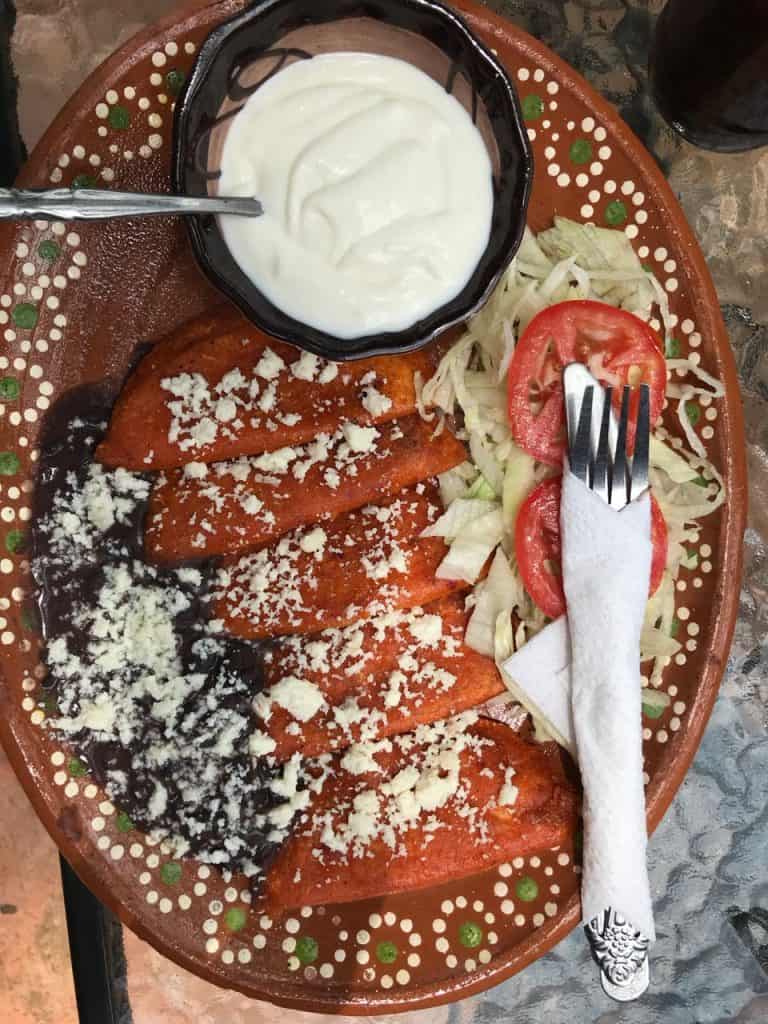
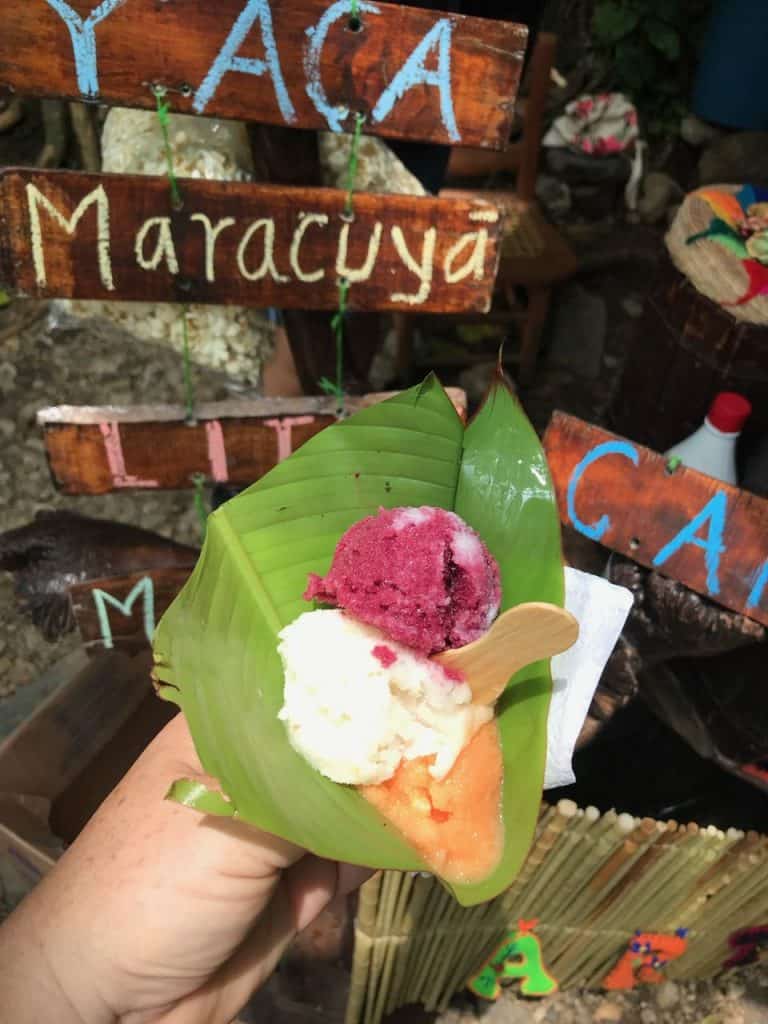
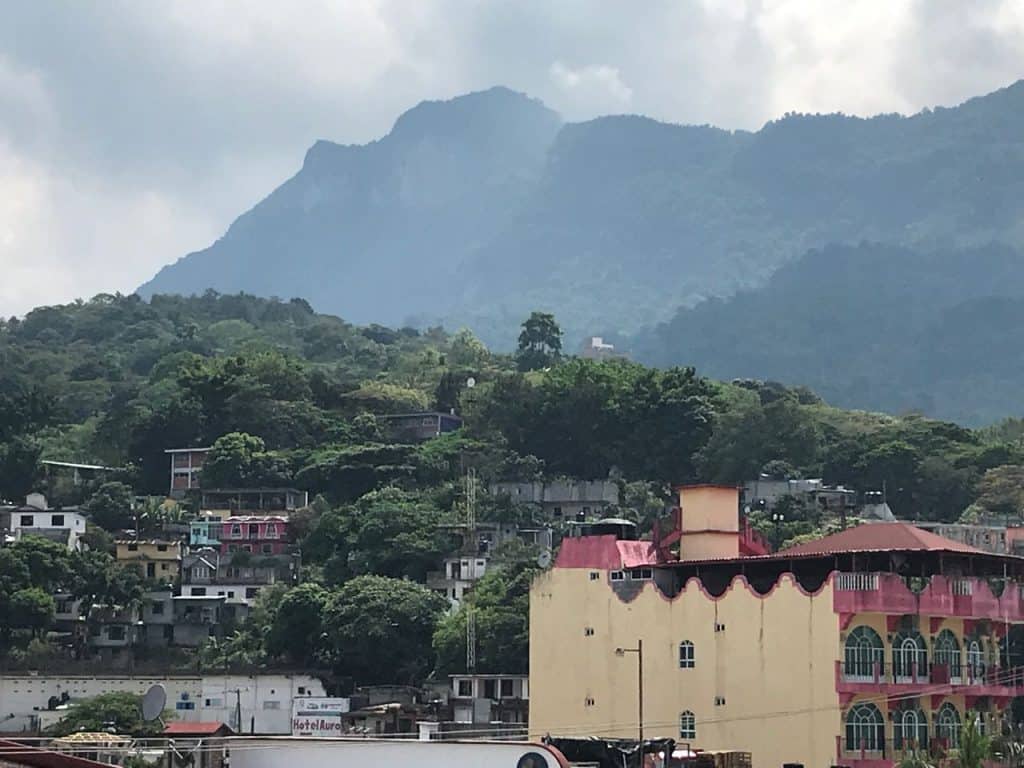
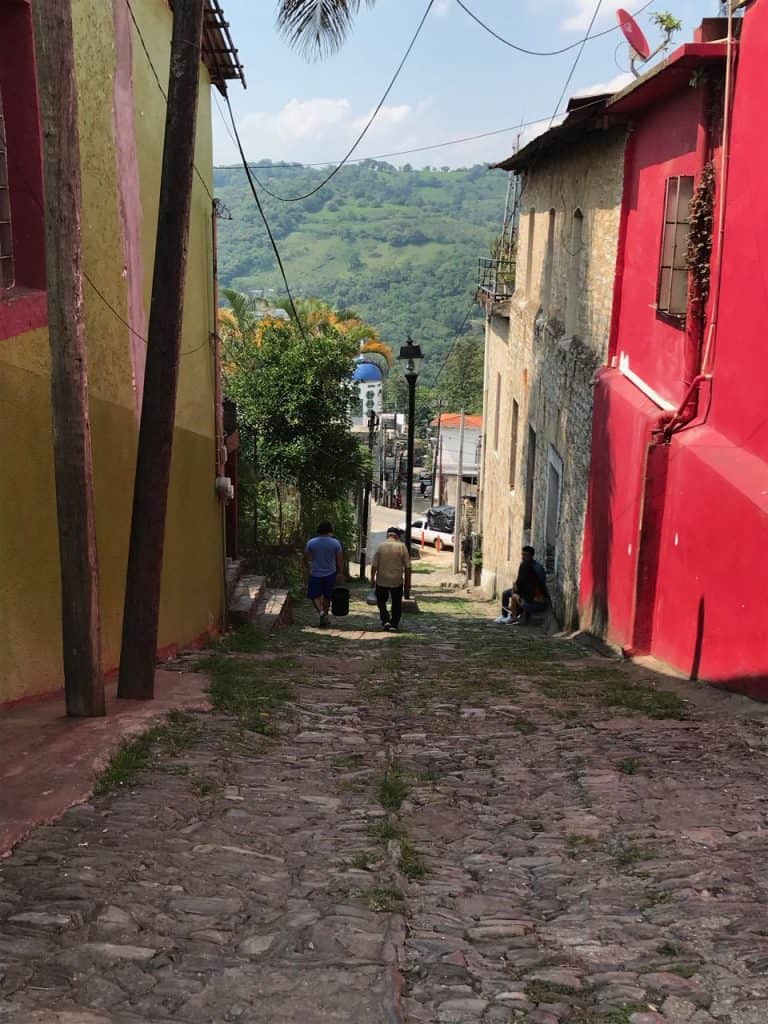
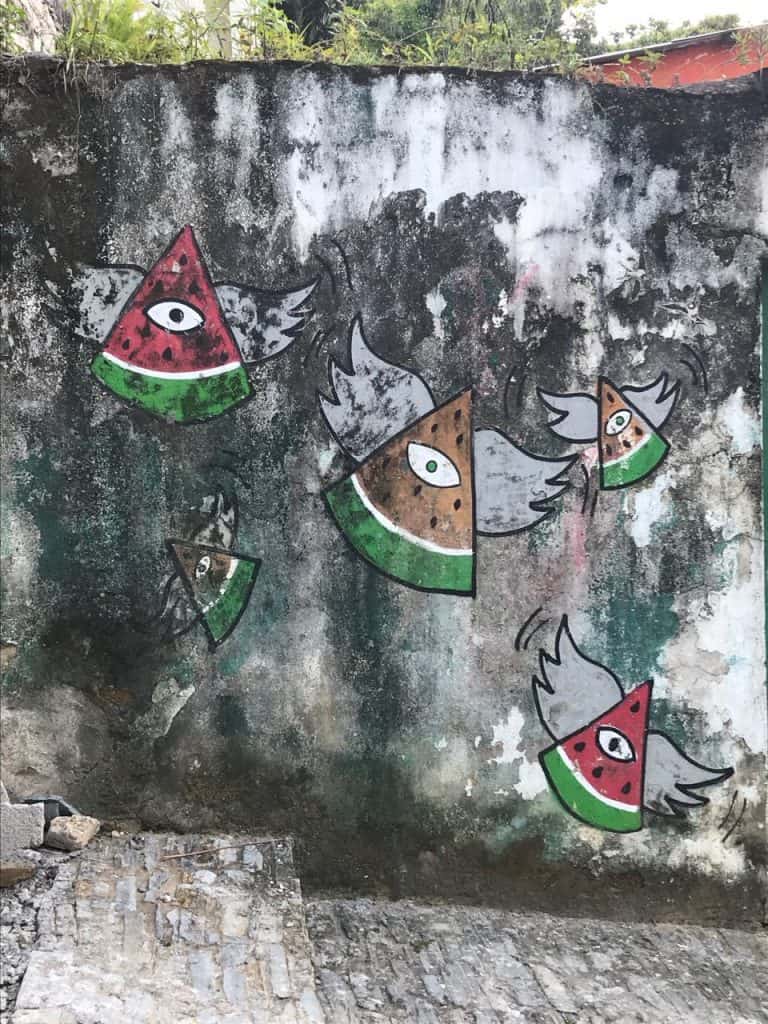
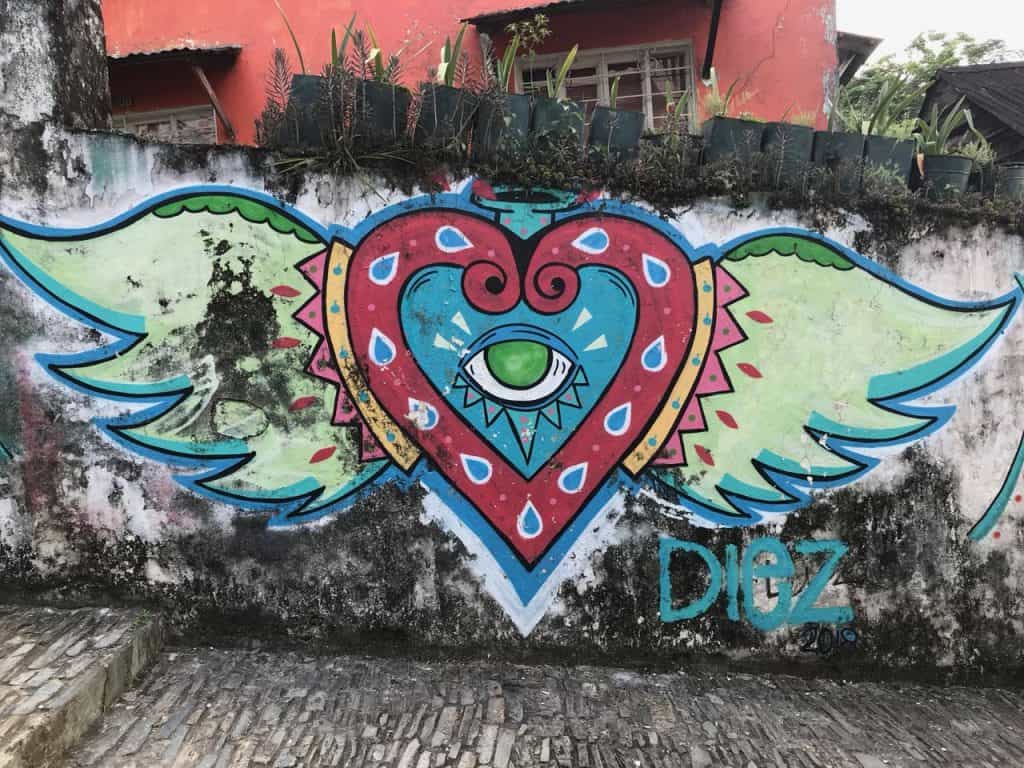
We hit the road to get back to San Luis Potosi as close to before dark as we could – no one likes driving at night in Mexico. We chased an electrical storm before finding ourselves in a cloudburst, driving blind. Our reward for not dying, and a sign of what the following days would bring, was perhaps the largest rainbow I have ever seen in my life. We arrived back in the city and decamped to the Gran Hotel Concordia which would be our home for the next three nights, coinciding with the mining convention that had just gotten underway. For the record, miners party.

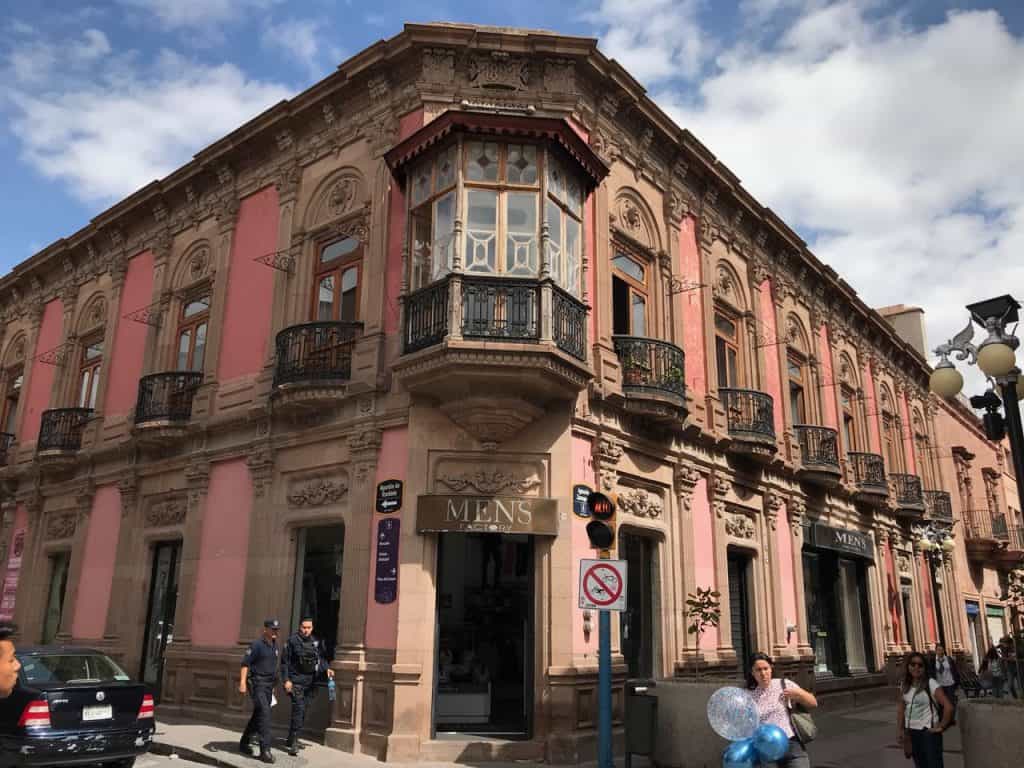
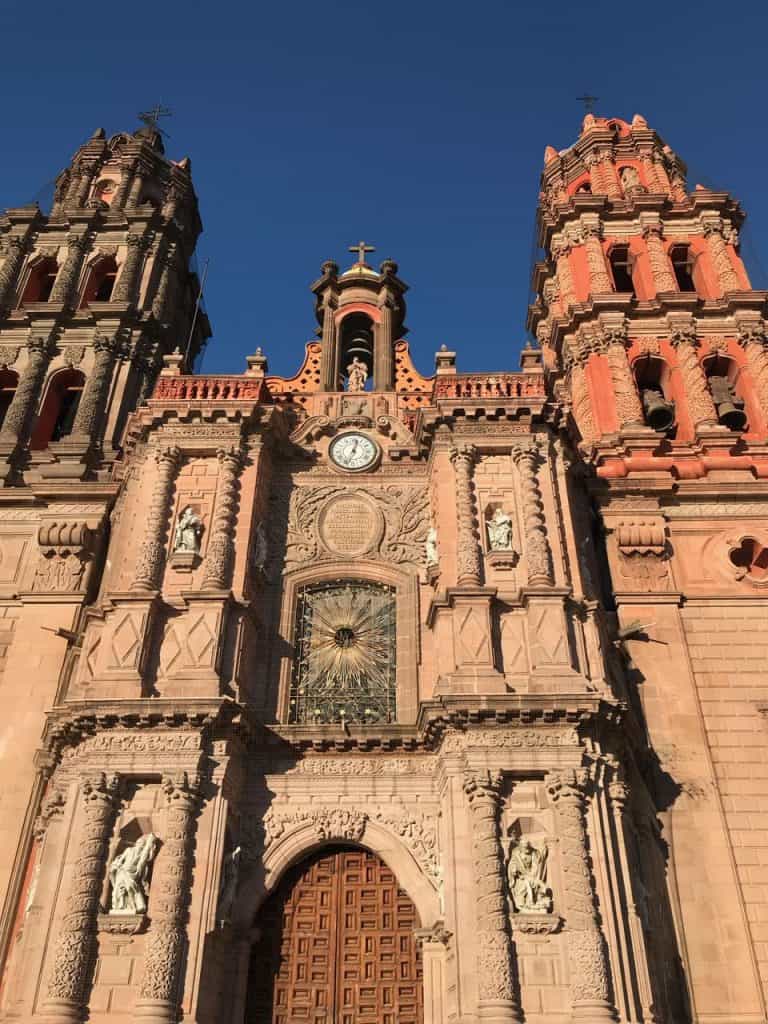
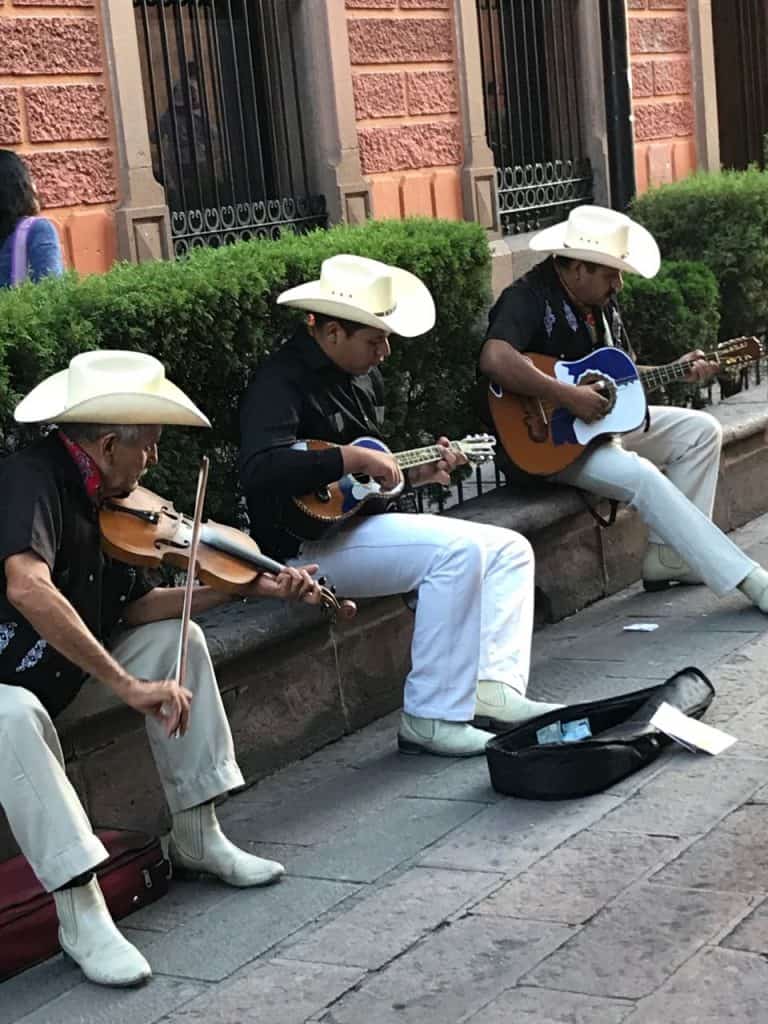
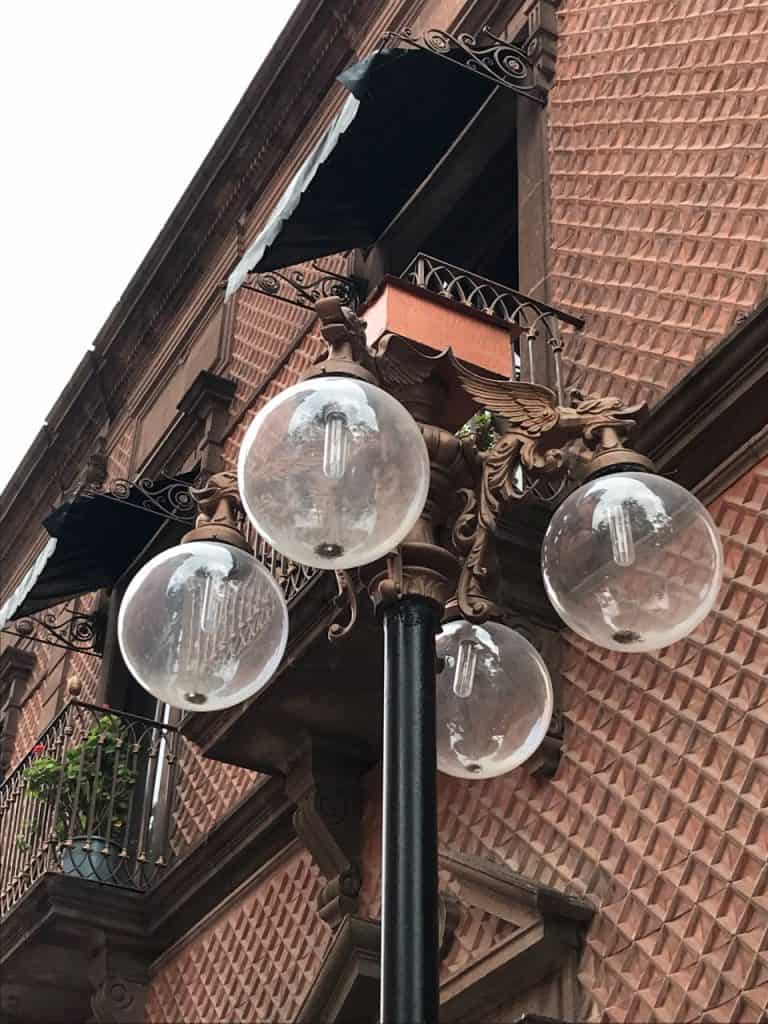
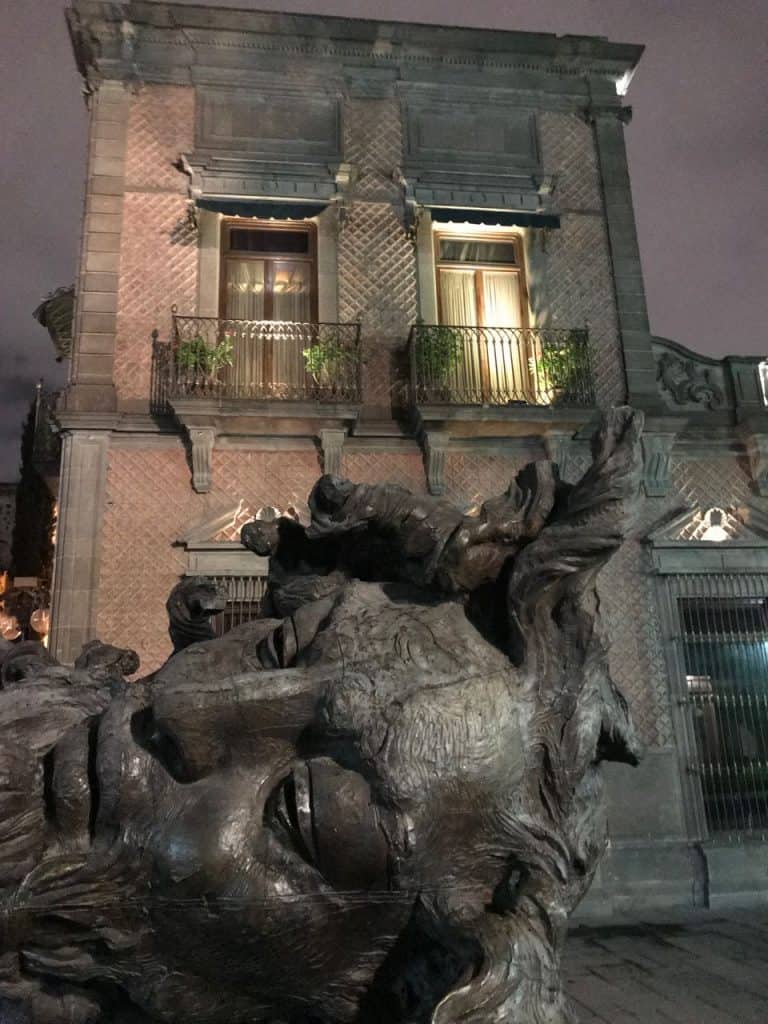
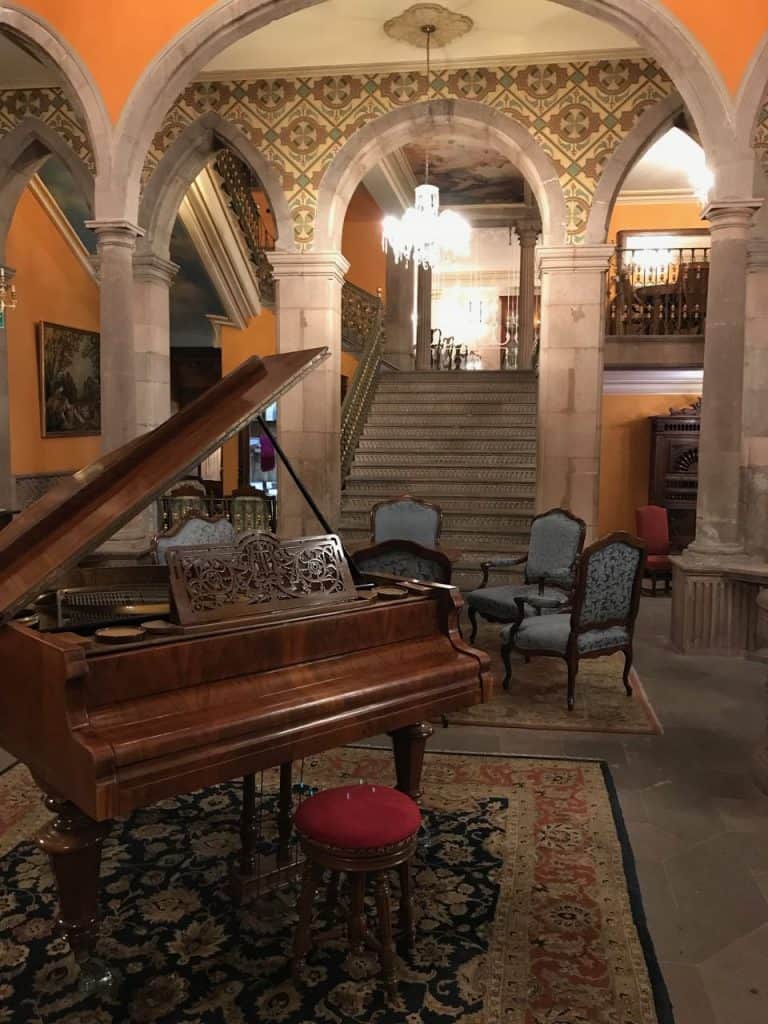
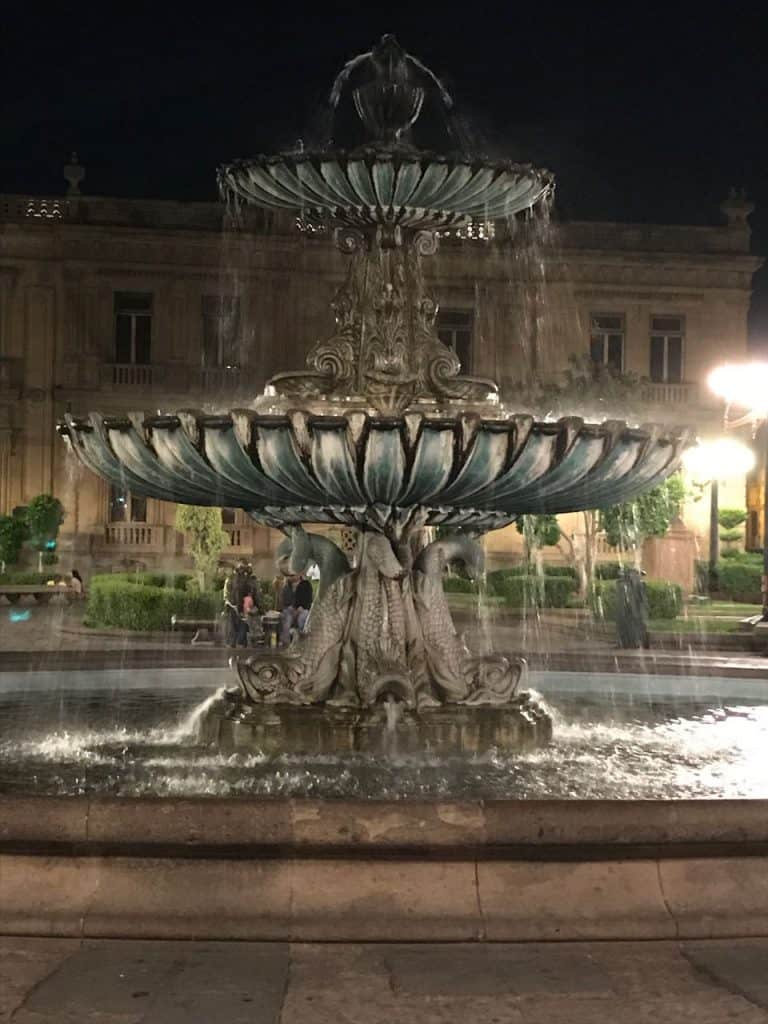
Mezcal in San Luis Potosi
The state of San Luis Potosi (SLP) ranks 6th in production of mezcal in Mexico, which is pretty impressive given there are only 10 tabernas or fabricas (the common names for palenque in SLP) in the state. The maestro mezcaleros are called empresarios and the workers in charge of watching or guarding each step of the process are called mayordomos. Of the ten there are only two producers of ancestral mezcal and one producer of artesenal mezcal like in Oaxaca. The remaining seven produce the bulk of what eventually ends up in the US market. All SLP fabricas use wild salmiana in their production. Within the salmiana family there are five sub varietals used in the production – verde, bronco, blanco, chino and cuerno. the verde, along with two other sub varietals pulquera and guadalupano, are used for making pulque. Sometimes the exact varietal is indicated on the bottle, but more often than not, most mezcals are made from a mix of the five different varietals. While the production processes vary in how the piñas are cooked – steam cooked in brick ovens, fire roasted in brick ovens or fire roasted in earthen pits – what they all have in common is that the fermentation process is started by adding pulque into the pressed agave juice. Because of the temperature variation in the desert, it is the only way to ensure a proper fermentation. Additionally, only one of the fabricas ferments with both the juice and mosto.
La Ruta del Mezcal – Day 1
Our first day of mezcal adventures began with a hearty breakfast at El Cafe Cortao famous for their chilaquiles, hearty egg dishes and a concha split open and smothered with a rich cream. Fully fortified, we set off for Santa Teresa, our first stop of the day and located only 45 minutes outside of the city. As we traveled north, it did not take long for the high plain desert landscape to emerge. This is big sky country and makes for dramatic plays of light as fluffy white clouds contrast with the deep blue backdrop, creating incredible shadows that highlight the rocky mountains and flat plains. It is breathtaking in its scope. The land is littered with cactus, small oak trees and of course agave. There is cattle roaming through unfenced land, as well as horses and goats.
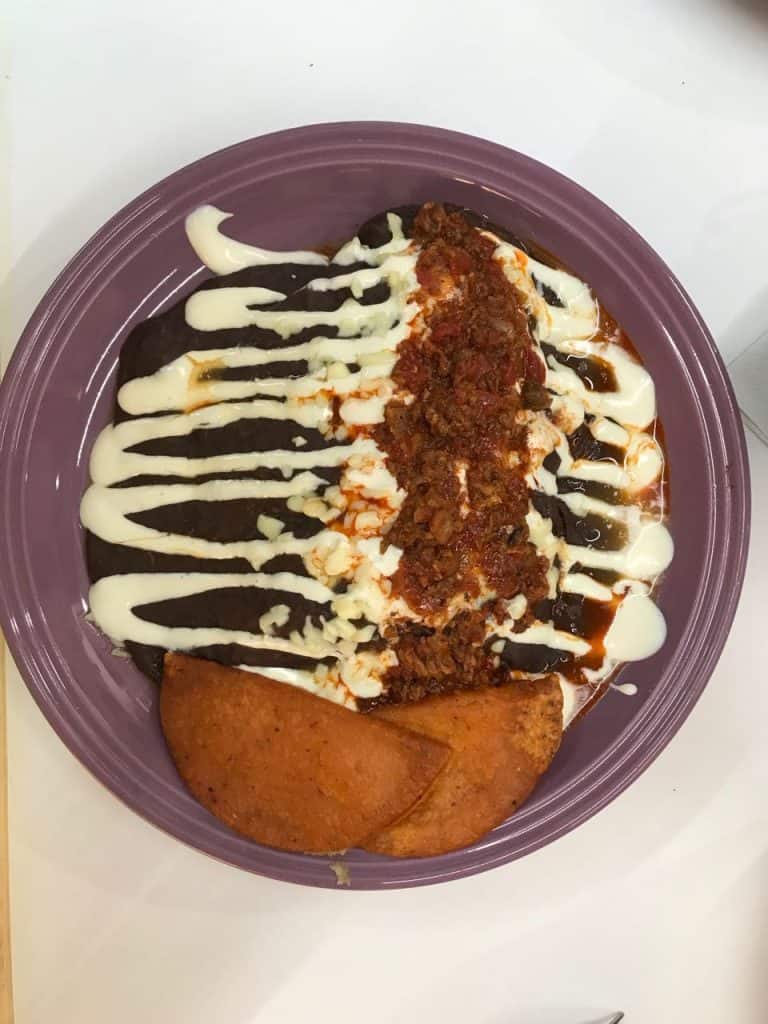
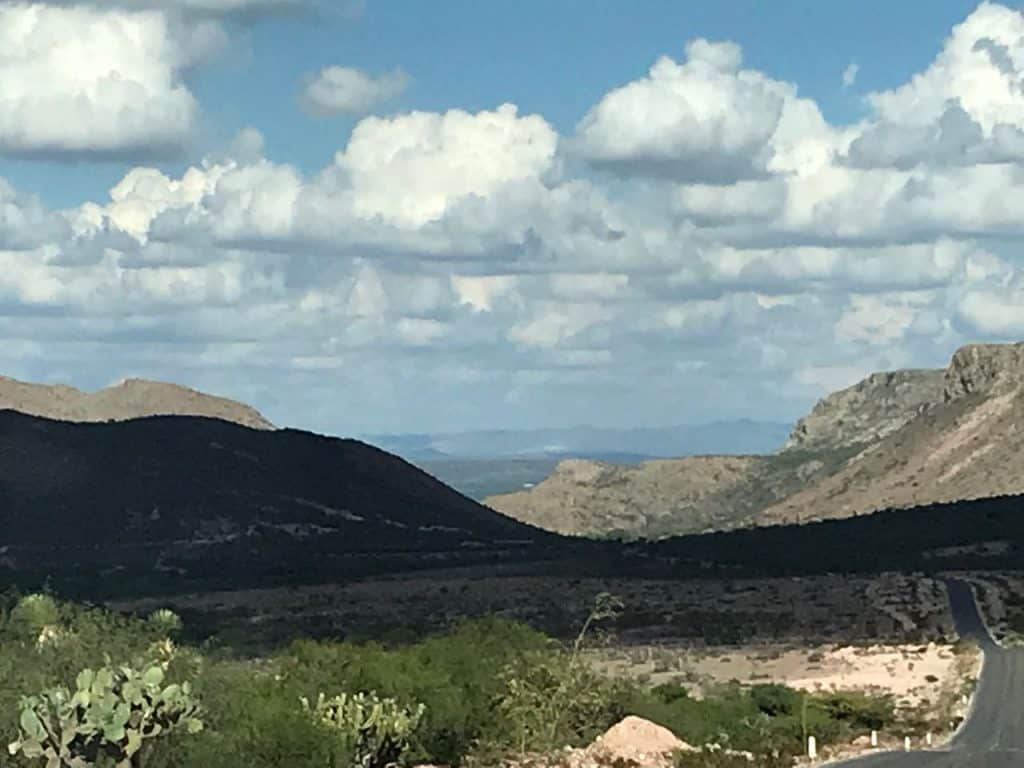
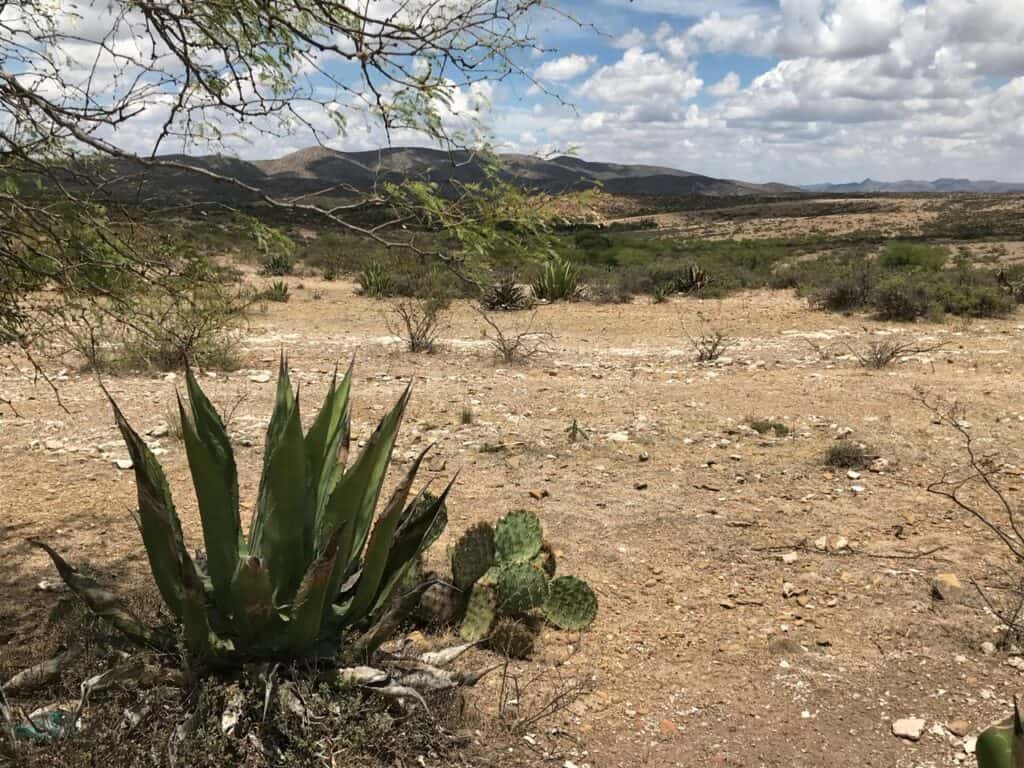
Santa Teresa is an old hacienda that has remained in continual use over its existence. The hacienda system dominated central and northern Mexico during Spanish rule. Each hacienda acted as its own town, complete with production areas, living spaces and a chapel. Today, Santa Teresa produces only mezcal, and works with Derrumbes. When you enter the gates the first thing you see is the giant Tahona, surrounded by buildings that house the brick ovens, the fermentation area and the machine we called La Bestia that powers the steam to cook the piñas. Connected to the various buildings were a series of pipes and channels to capture not only the steam to cook the agave, but also all of the juice. One system of pipes captures juice dripping from the roast, moving it to open tanks where the juice is further cooked on its on, extracting even more sugar. This is called the guixhe (or guixe or guishe) and it is eventually added to the other fermentation tanks. The other pipes and channels flow from the tahona where the roasted agave is crushed by a gigantic stone wheel, pulled by horses. The pressed juice flows into fermentation tanks in a semi closed room. Foaming away is a “mother” or pulque fermentation starter that is then added to the juice to get the process started. It usually takes about 24 hours to fully ferment, though of course it can vary depending on the weather conditions. The fermentation must be carefully monitored and it was not uncommon to see a bed in the fermentation area.
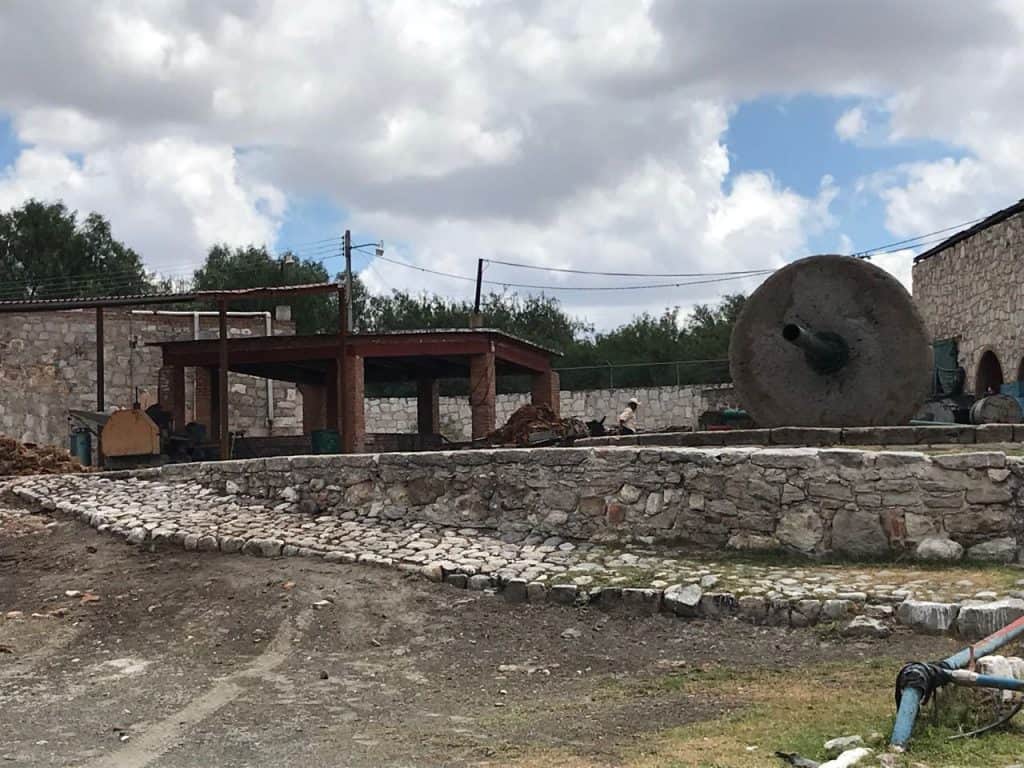
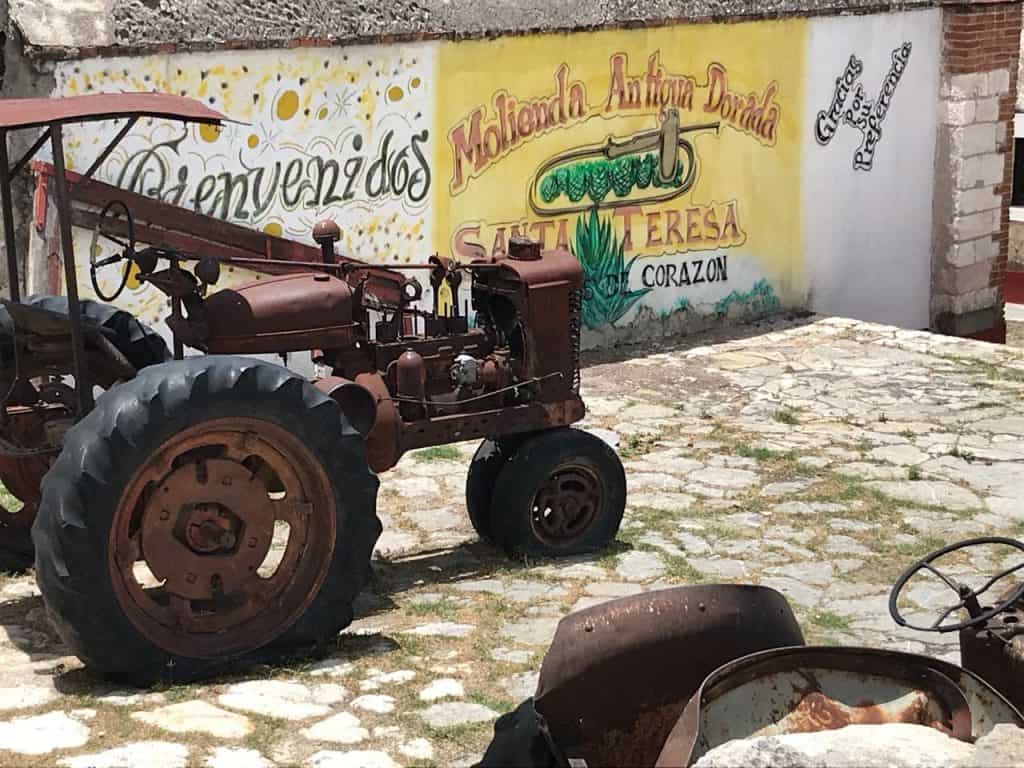
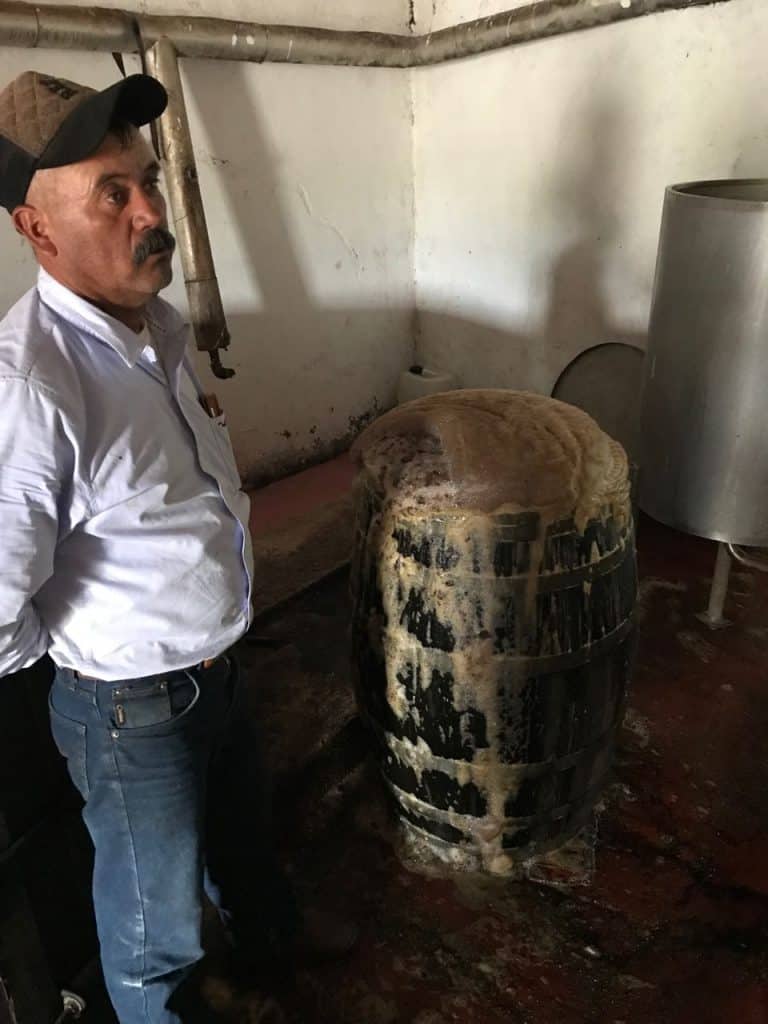
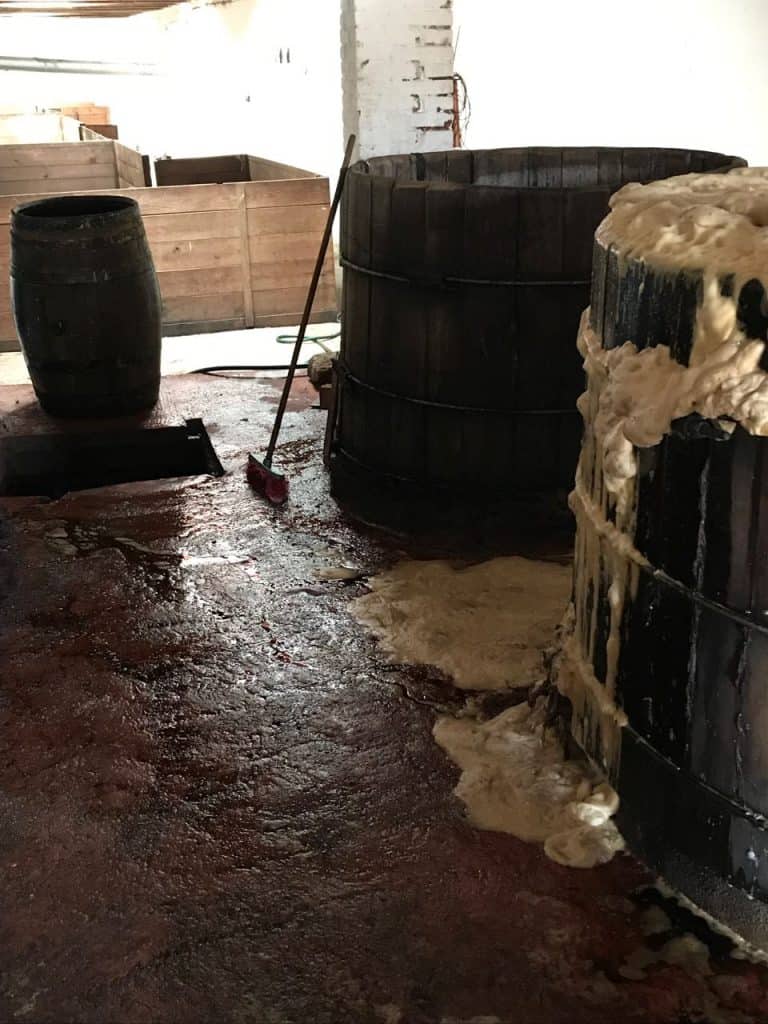
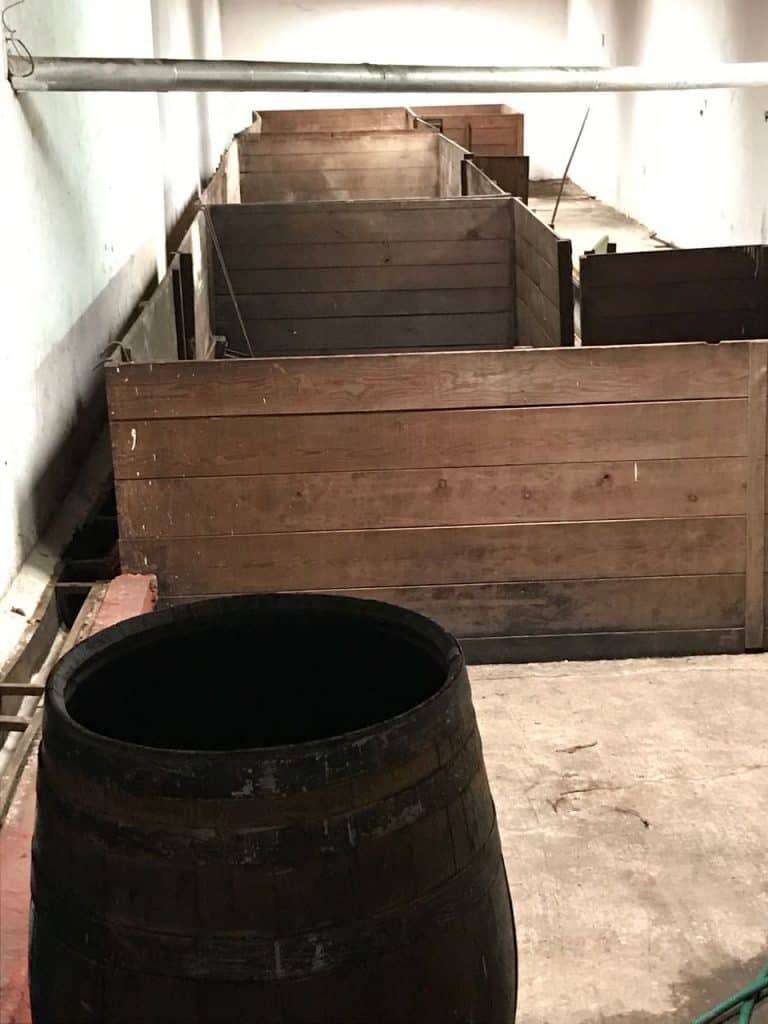
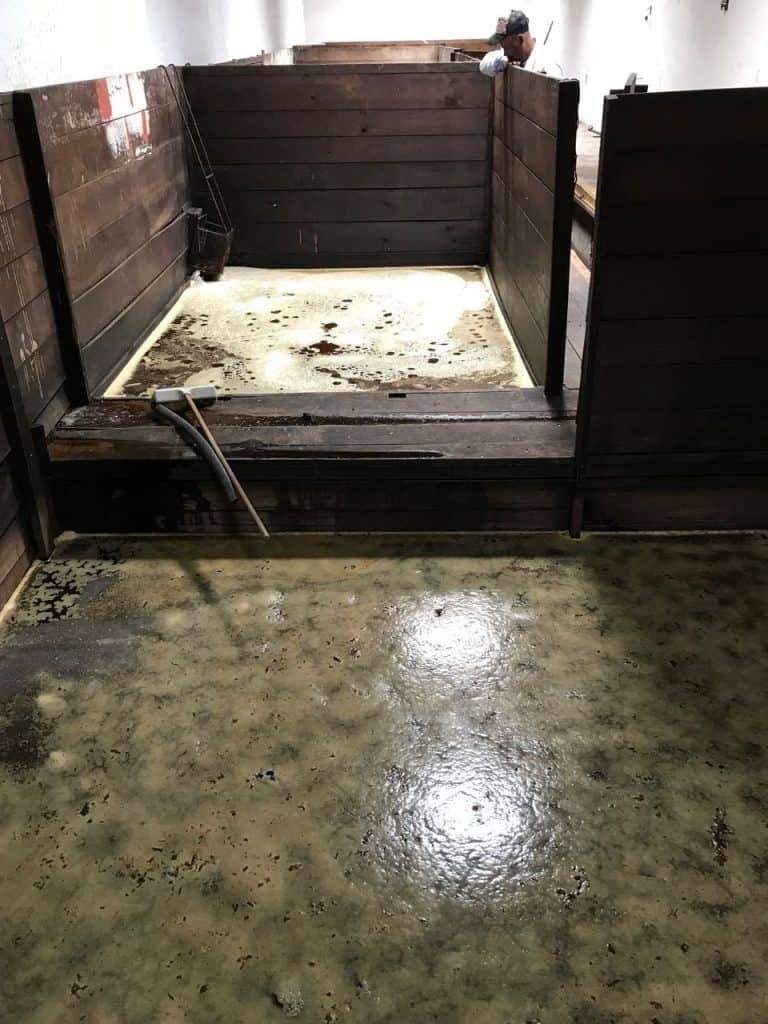
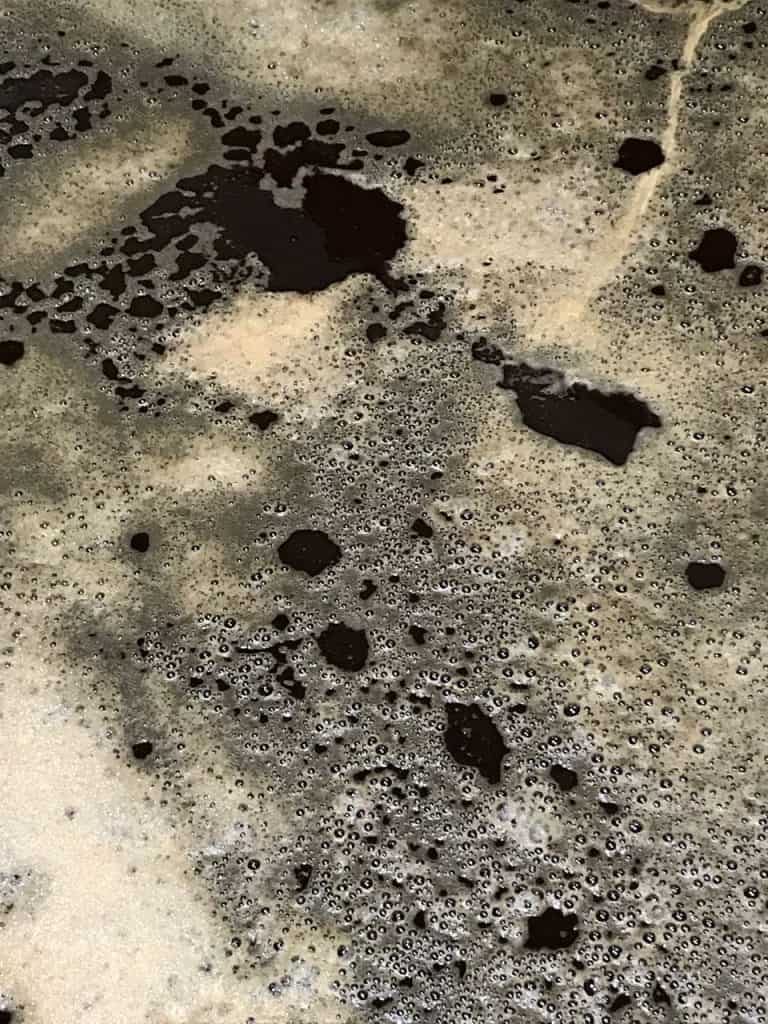
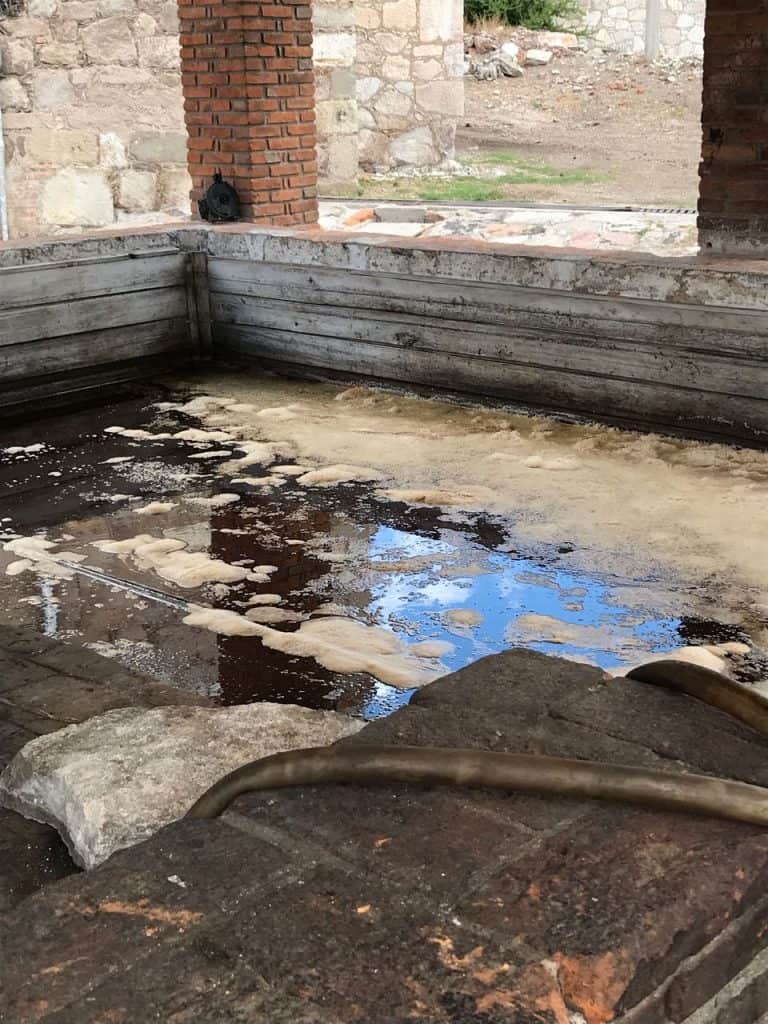
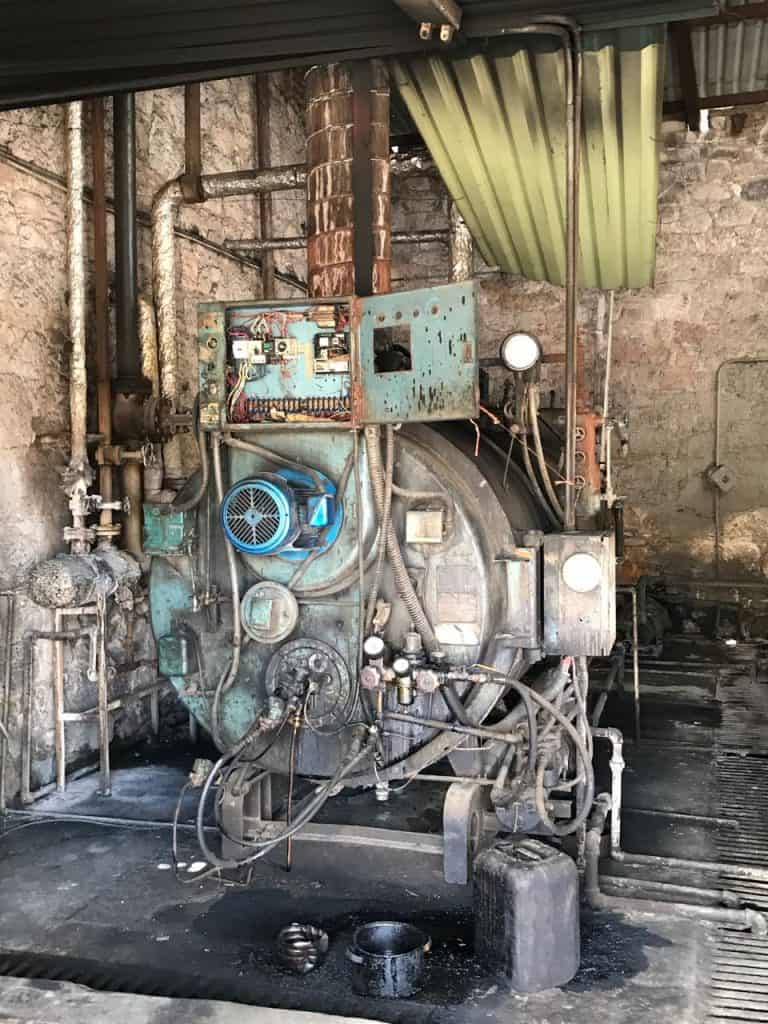
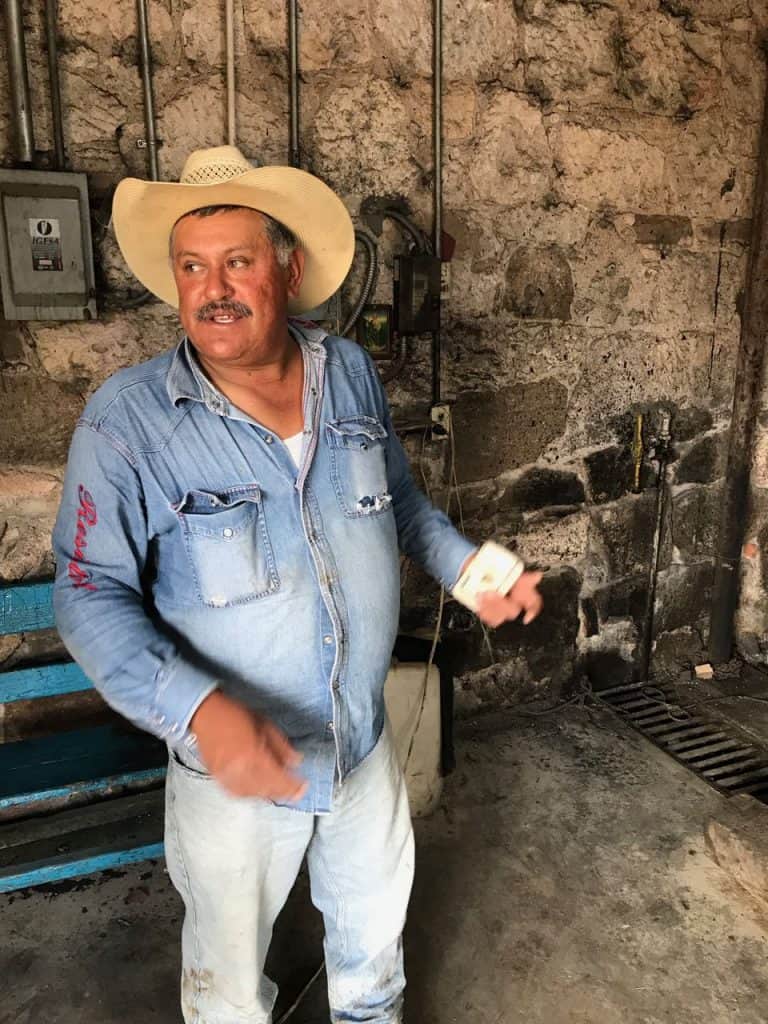
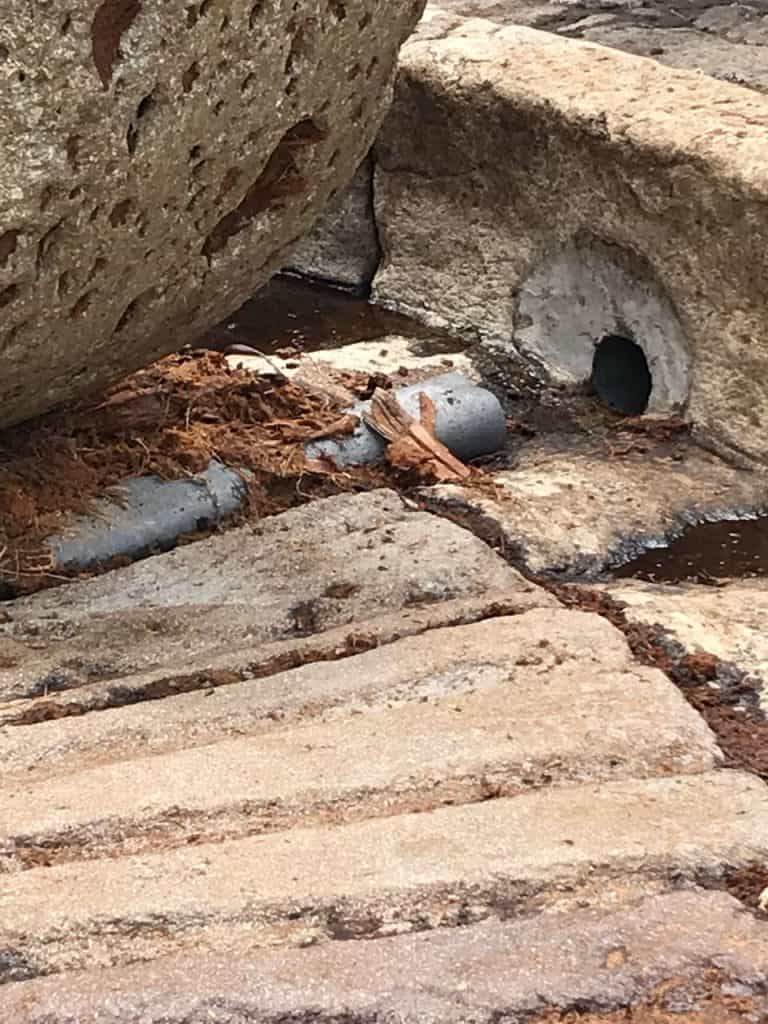
Once fermented, the juice is then pumped to the copper stills. It is a single distillation process, though the three plate system means it is double distilled in the single process. The resulting mezcal usually hovers around 40% ABV.
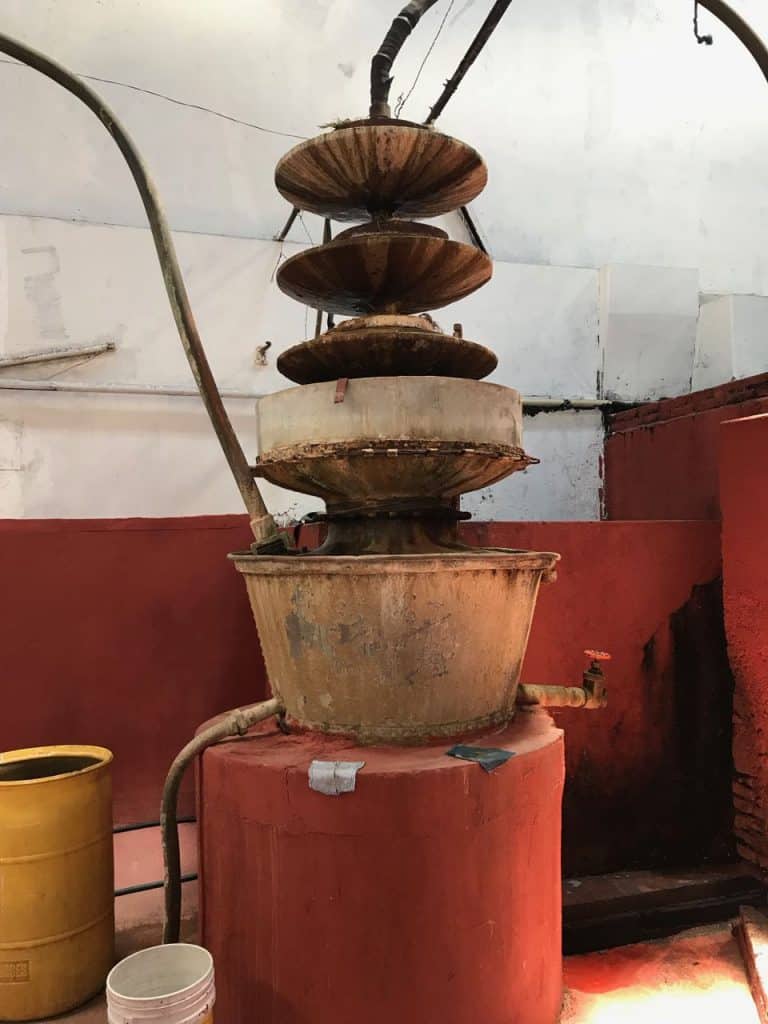
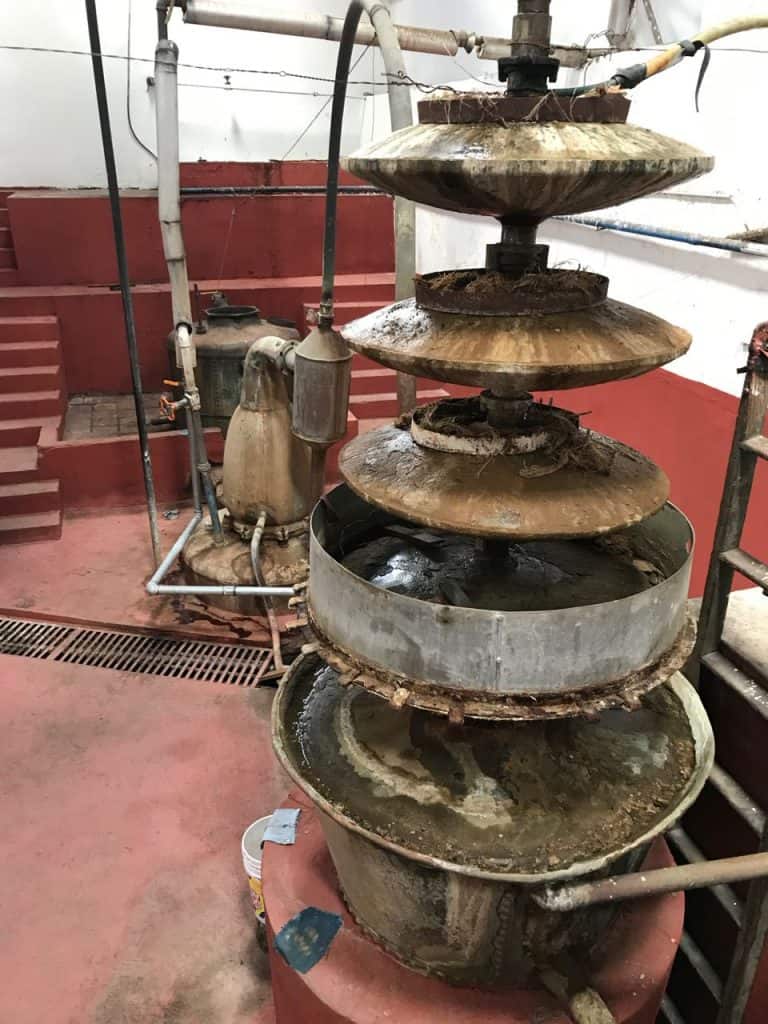
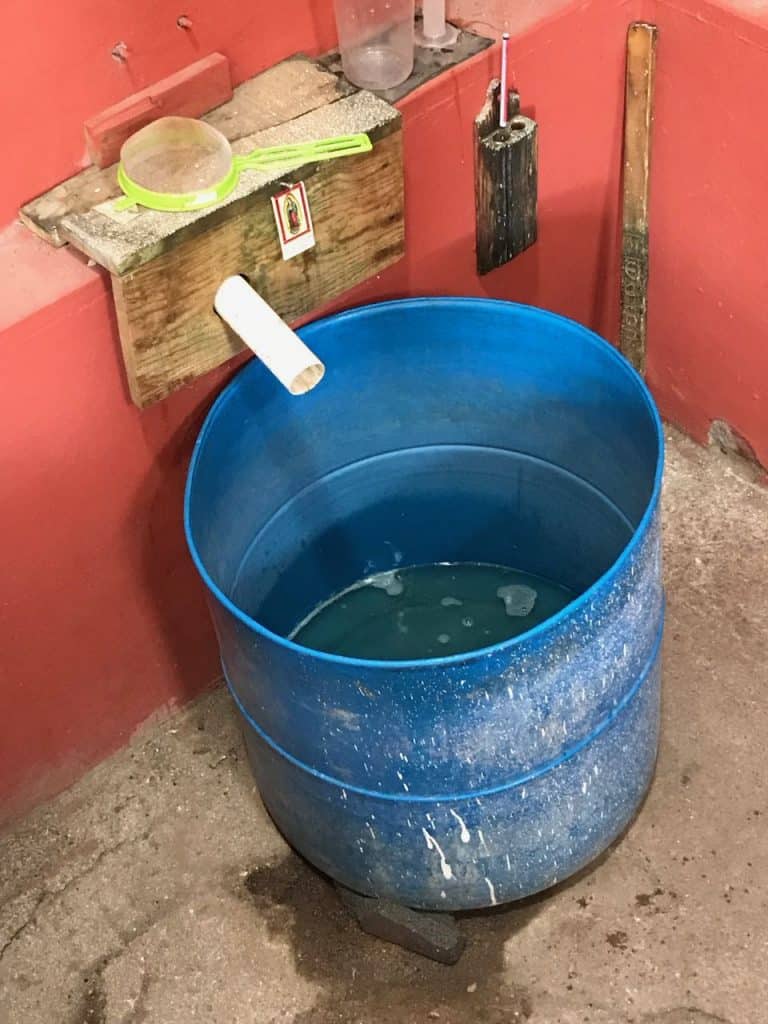
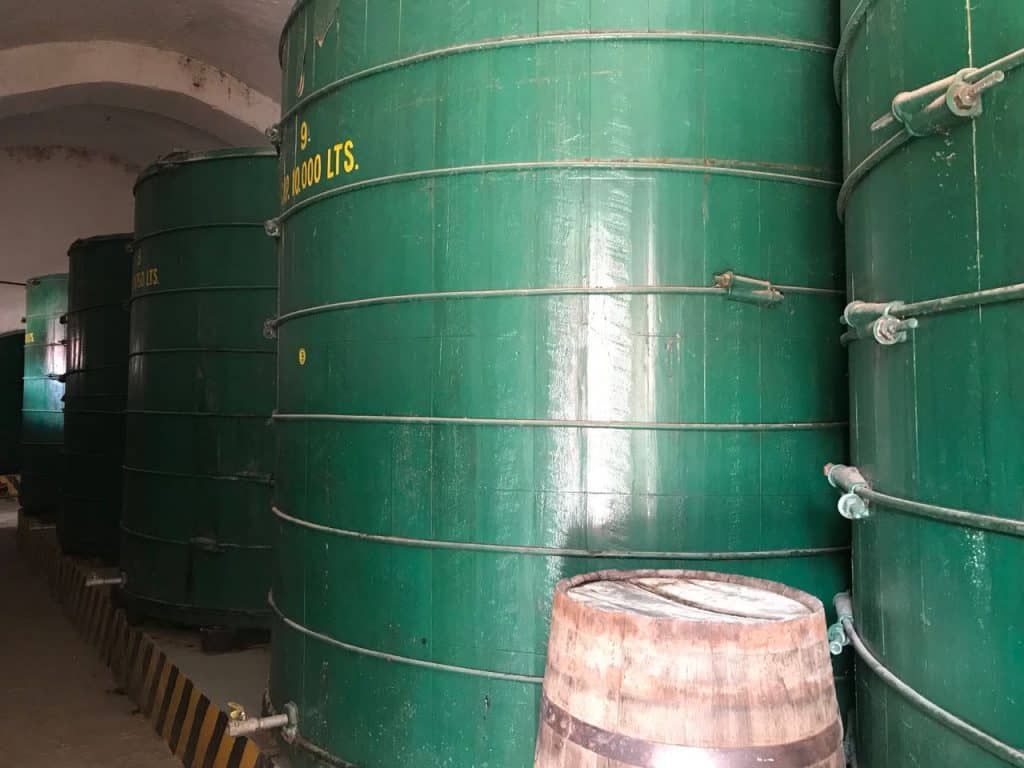
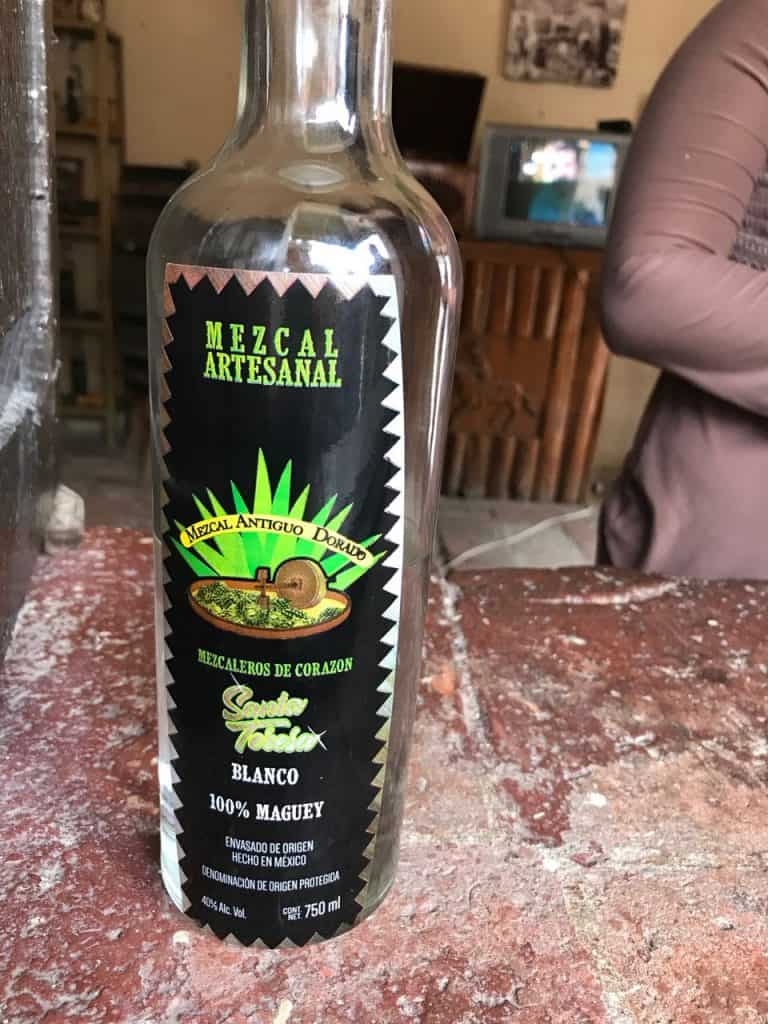
There are five ovens at Santa Teresa and each one is able to cook up to 600 piñas depending on the size. For each roast it takes approximately 100,000 liters of water which seems like a gigantic amount when you are standing in a desert. The water comes from a dammed reservoir, fed by the runoff from rain and underground springs. Piñas are purchased from ejidos, groups of agaveros that harvest from municipal lands. Currently, there are no formal rules or structure of reforesting, but we were told by our guide that they leave two hijuelos undisturbed for every agave harvested. There are currently no viveros. One disturbing thing we learned was that up to 60,000 piñas a day were being transported from SLP to Jalisco for the production of agave nectar. When you do the math that comes out to 21,900,000 piñas a year. Despite a landscape filled with agave, particularly without a formal structure controlling harvest and reforestation, it seems unimaginable that this is sustainable or that there is an ending supply of agave.
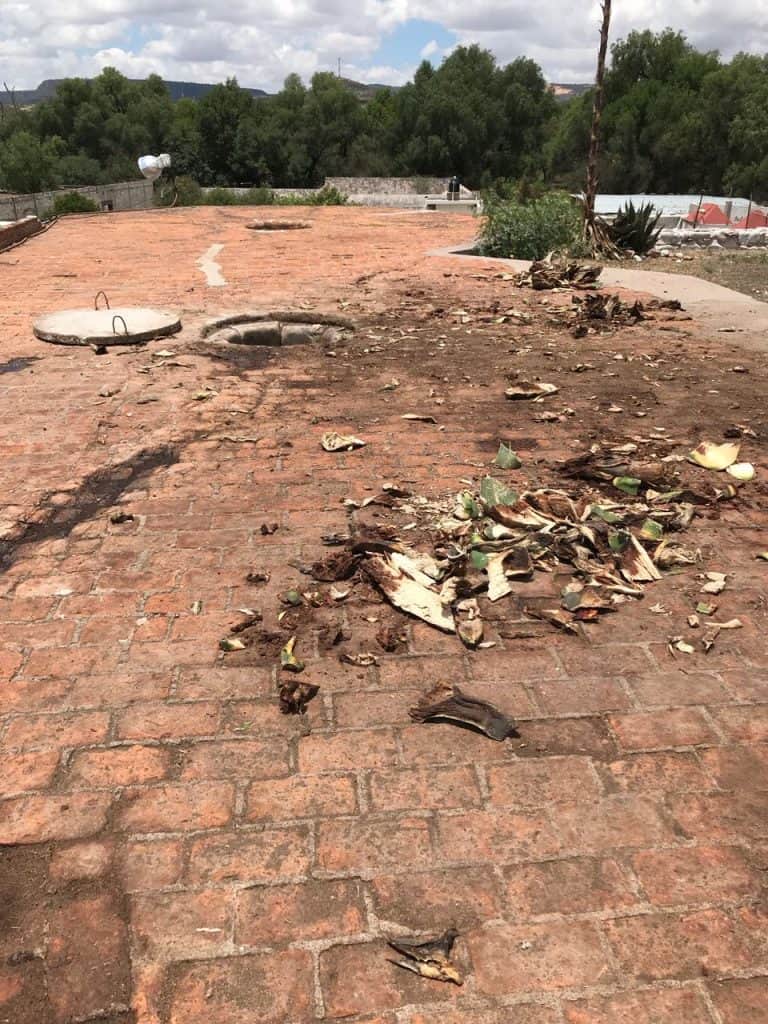
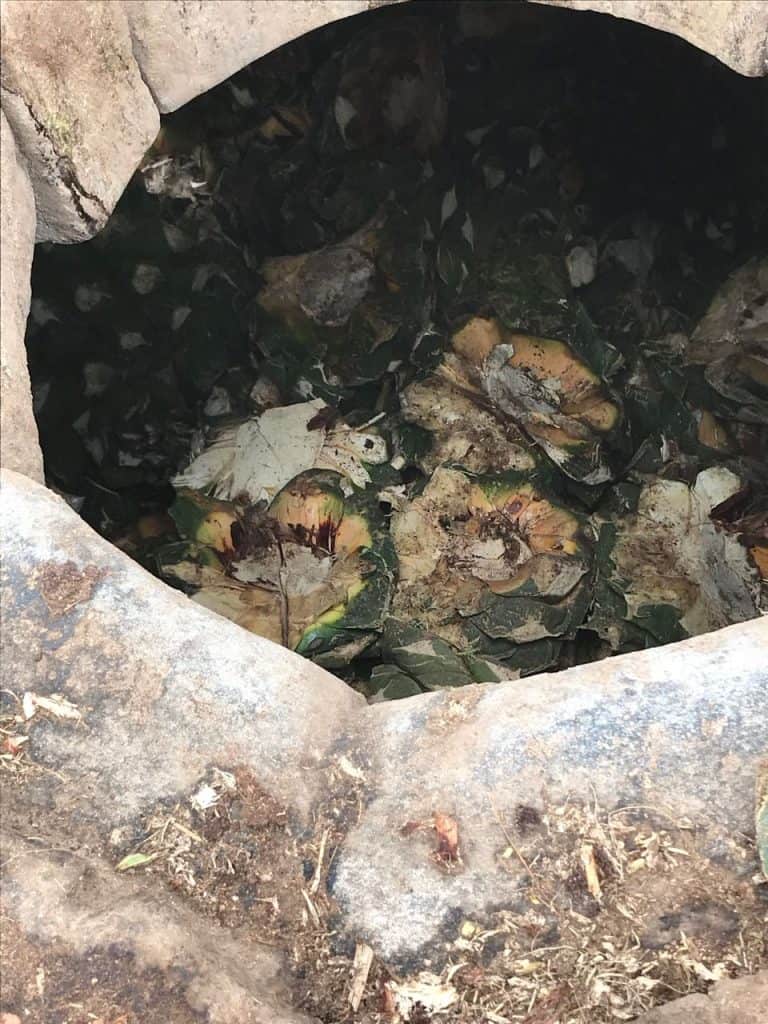
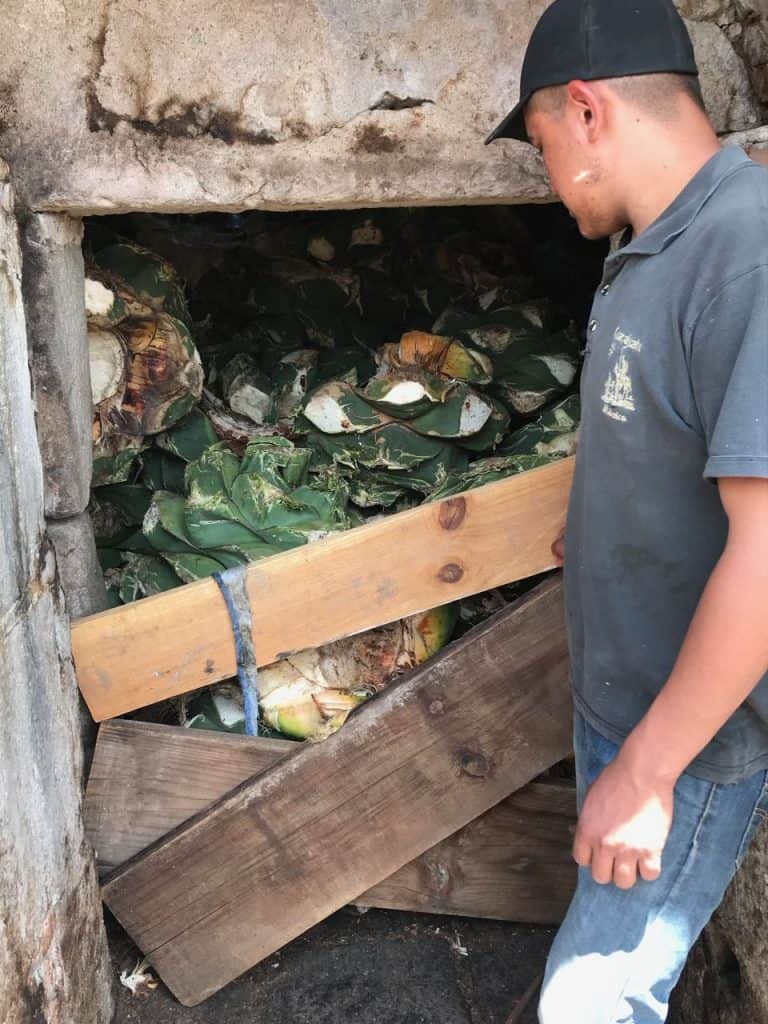
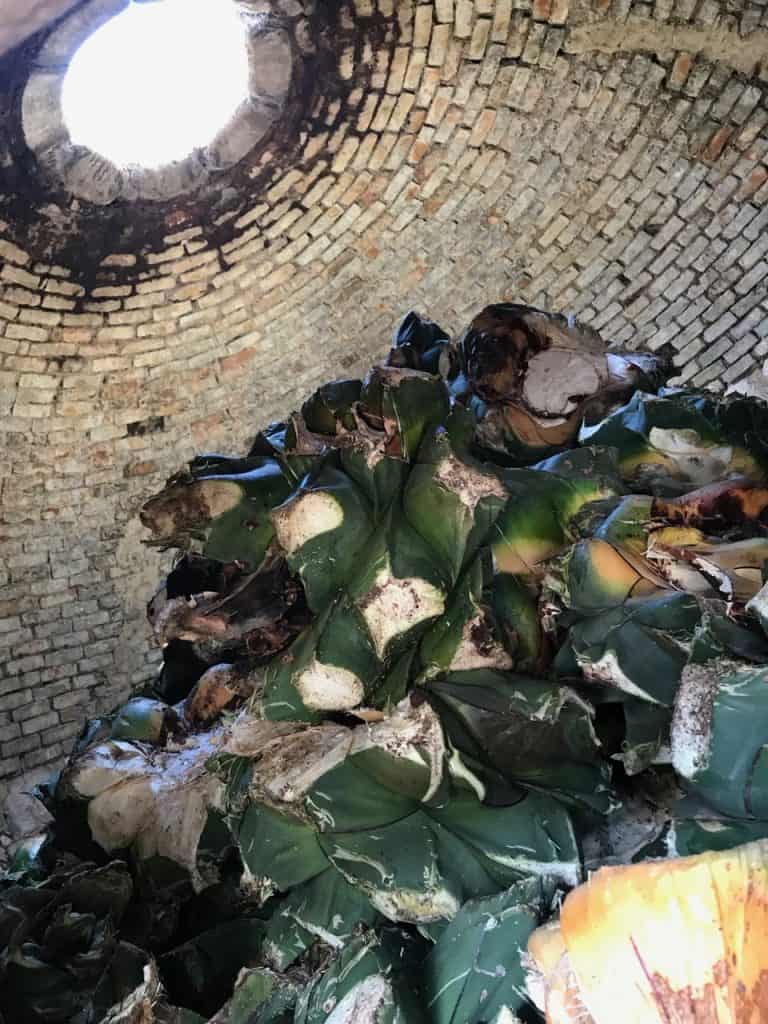
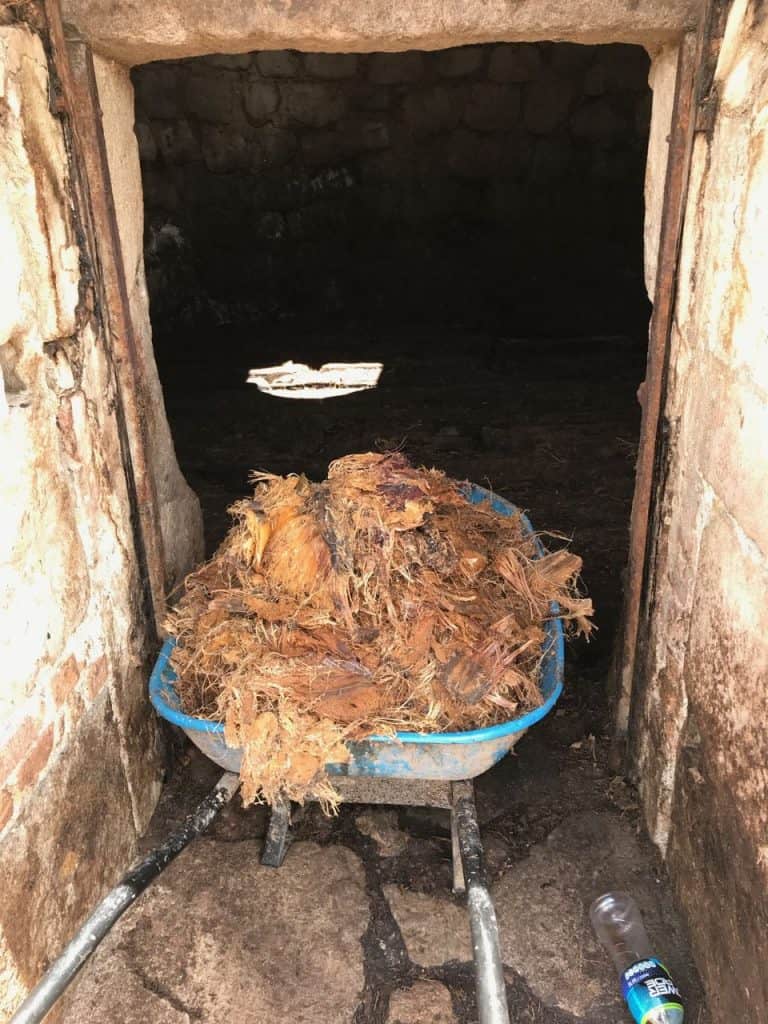
From Santa Teresa, we headed to iPiña, another hacienda about an hour away. The paved road we were on eventually gave way to dirt and we found ourselves driving further into the desert, away from any populated areas. We drove beside railroad tracks and a dry riverbed for what seemed like forever, before finally arriving in the small town home to the hacienda. We stood outside knocking on the steel door for a good five minutes before a woman in the small store by the entrance told us to just go in as the door was unlocked. A look passed between the three of us – it is never a good idea to just walk into a gated location in the middle of nowhere Mexico, especially in a town that served as a back drop for the film El Infierno. Tentatively we opened the heavy door and walked in and found, well no one. The buzz of heavy machinery indicated that anyone there was far from the entrance. We yelled out a few times before finally catching the attention of someone.
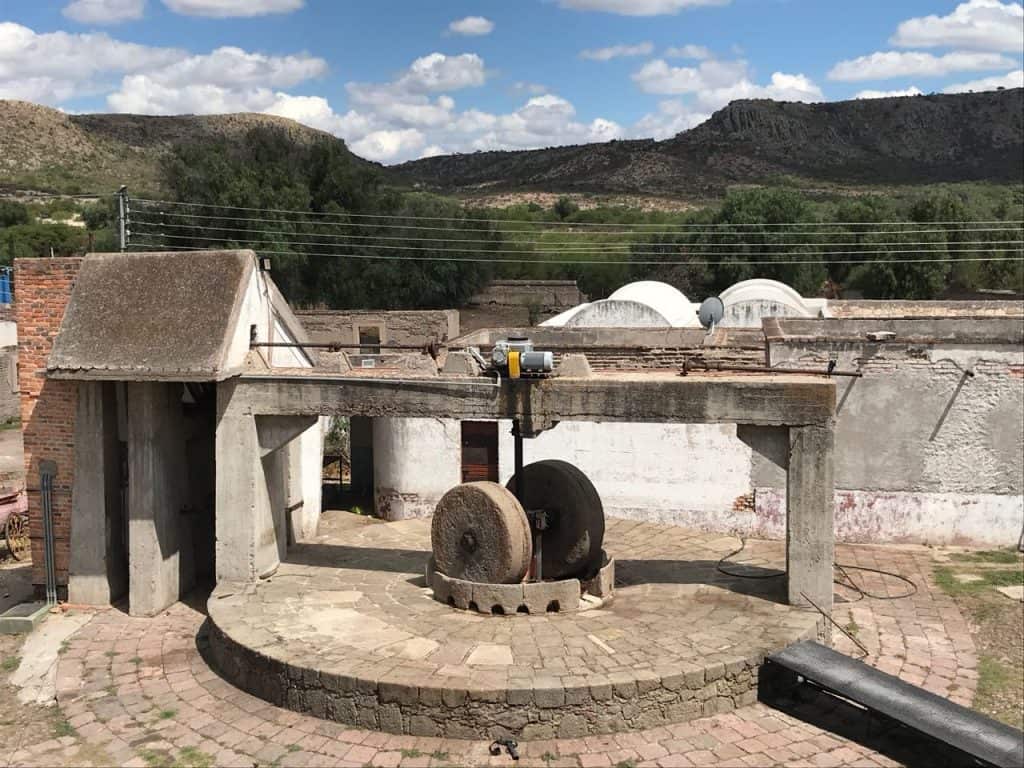
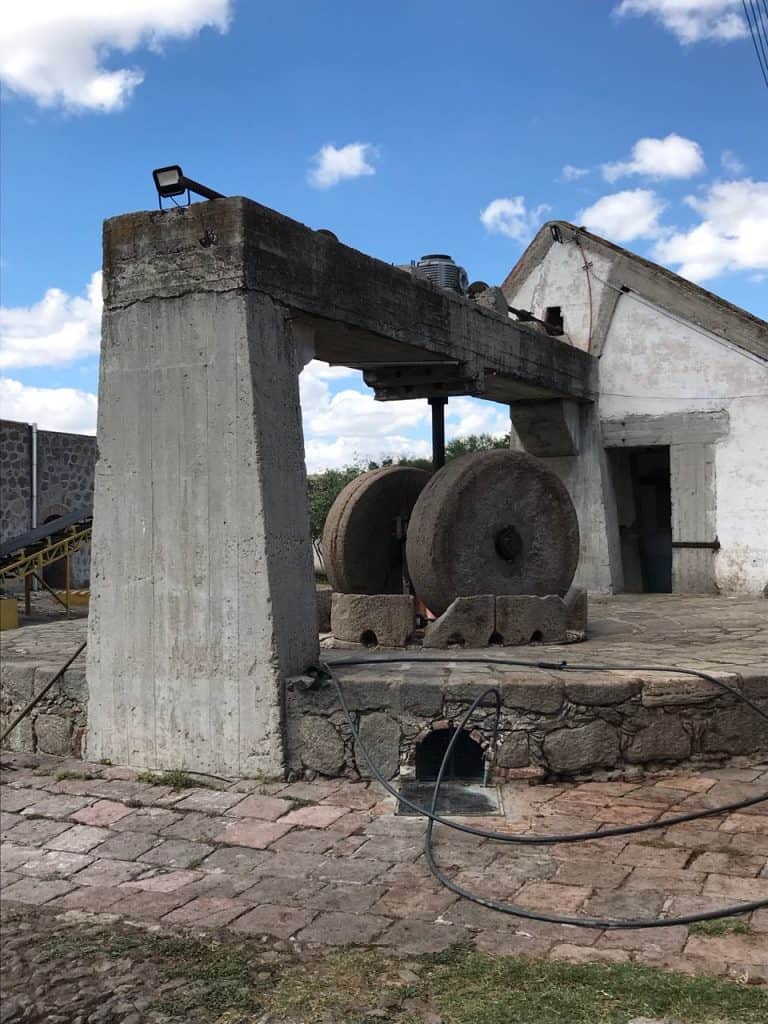
Like Santa Teresa, a huge tahona stood in the middle of the hacienda, surrounded by the ovens and fermentation room. There were also autoclaves on site, but we were told they were not used as they did not like the flavor of the mezcal the process produced. There were also a row of solar panels that had been installed. iPiña currently produces two labels of mezcal, iPiña and Jurame. As at Santa Teresa, they use steam to roast their piñas in five ovens that can each hold 600-800 piñas depending on the size. The set up is also similar to Santa Teresa with channels and pipes that move the agave juice from the tahona to the fermentation area and then finally to the distillation room. We tasted through the products and were very surprised at the full flavor of their 37% ABV product. It was quite delicious, something I never thought I would say about any mezcal at that percentage. We also had a chance to try their 57% mezcal, something not currently available for sale. The mayordomo who took us around the fabrica was quite humored to find two women as excited as we were to taste it, and more than that, very determined to buy a couple of liters. After much cajoling, we finally convinced him to sell us some bottles. We finally said our good byes and headed back to San Luis Potosi, much of the ride back taken up by further discussion of the 37% mezcal. It is entirely possible that the salmiana is the one variety of agave that holds up at that low ABV. Later that night we hit up La Consagrada for some delicious pizza, as well as some very interesting aguardiente made in San Luis Potosi.
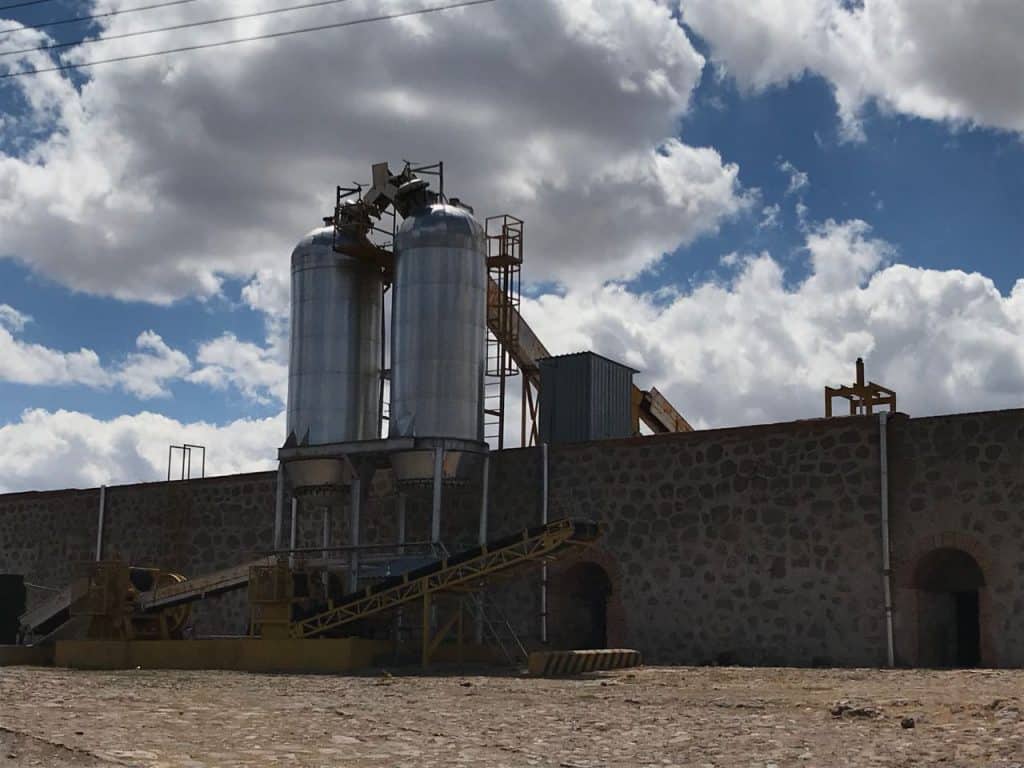
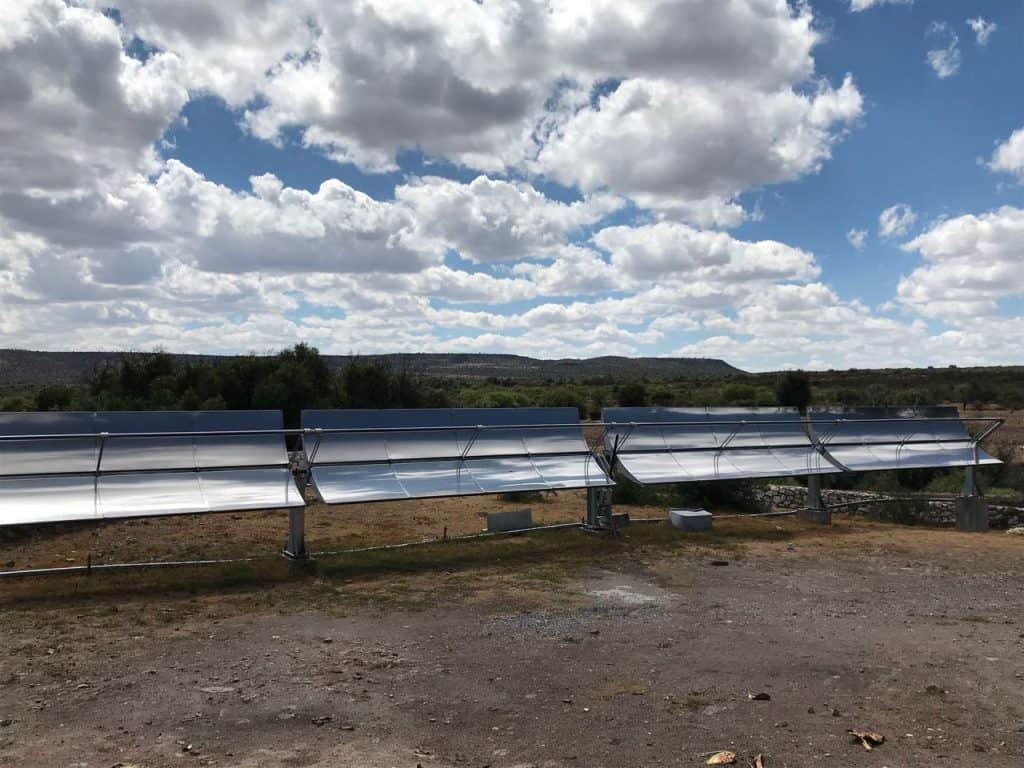
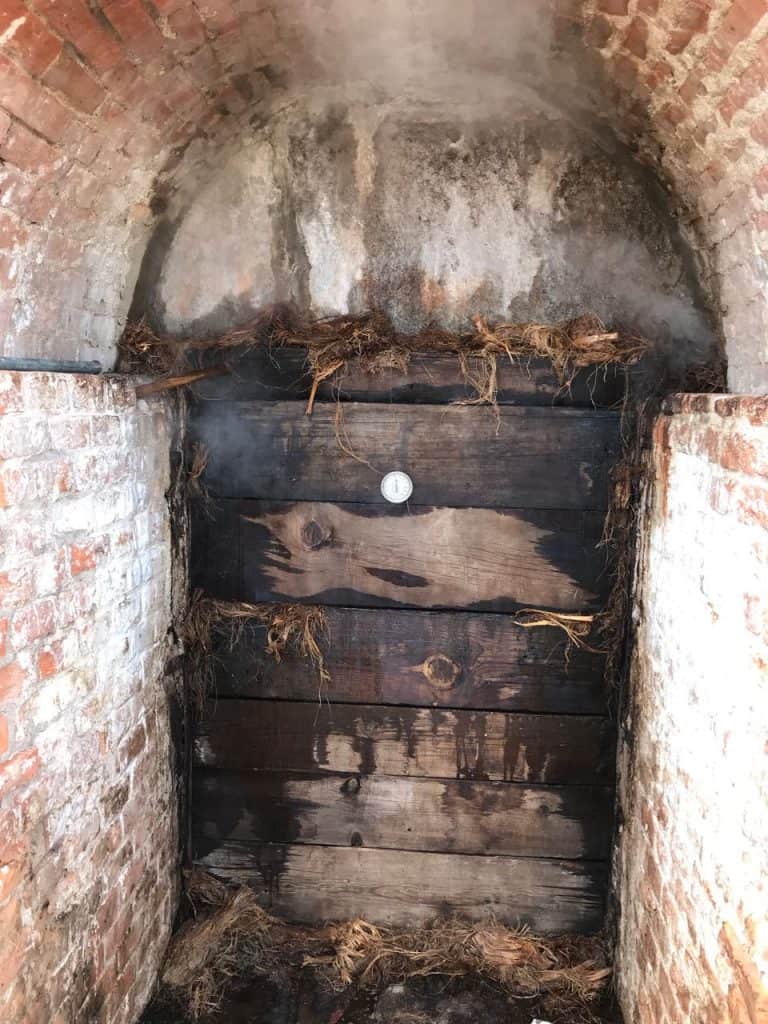
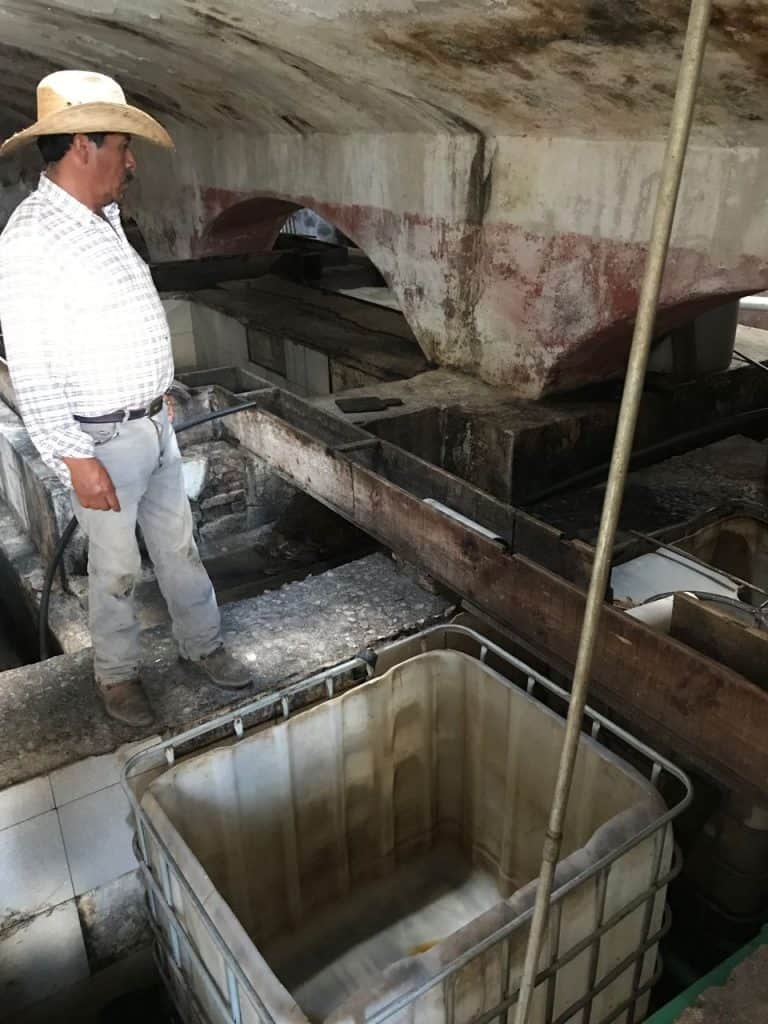
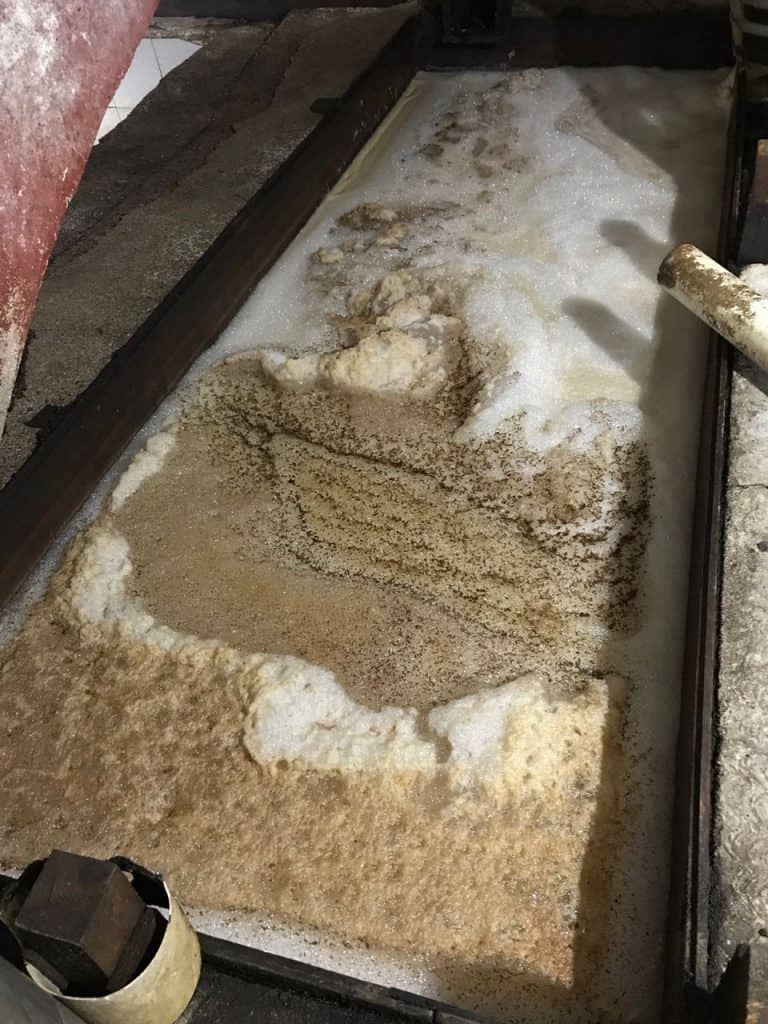
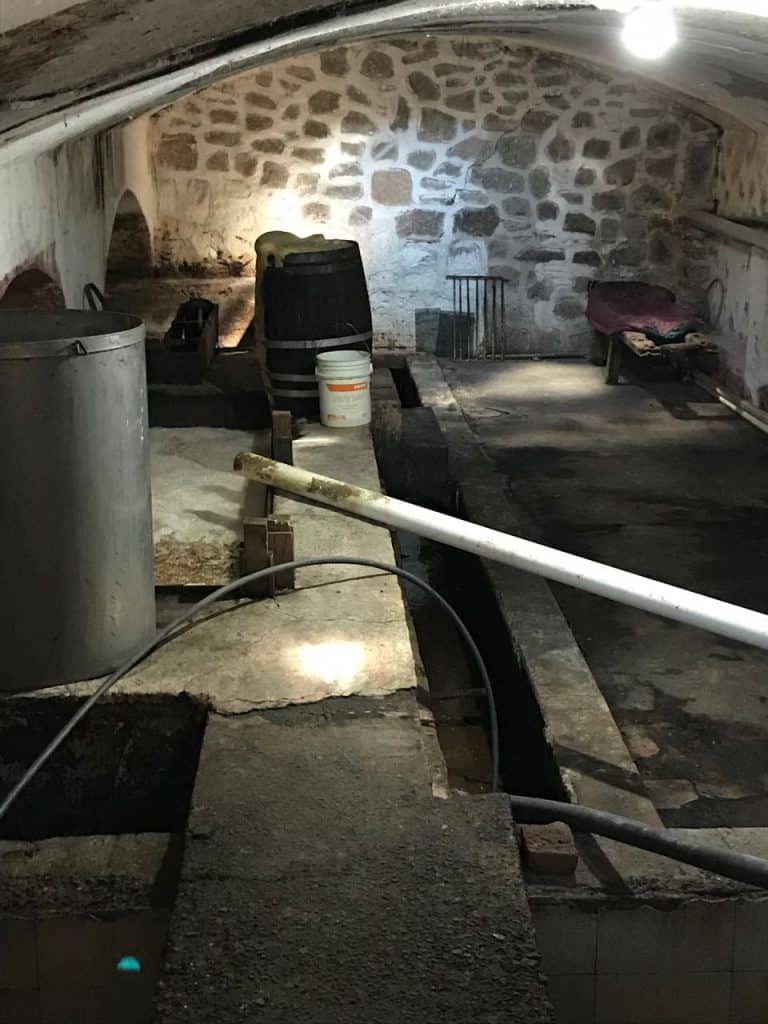
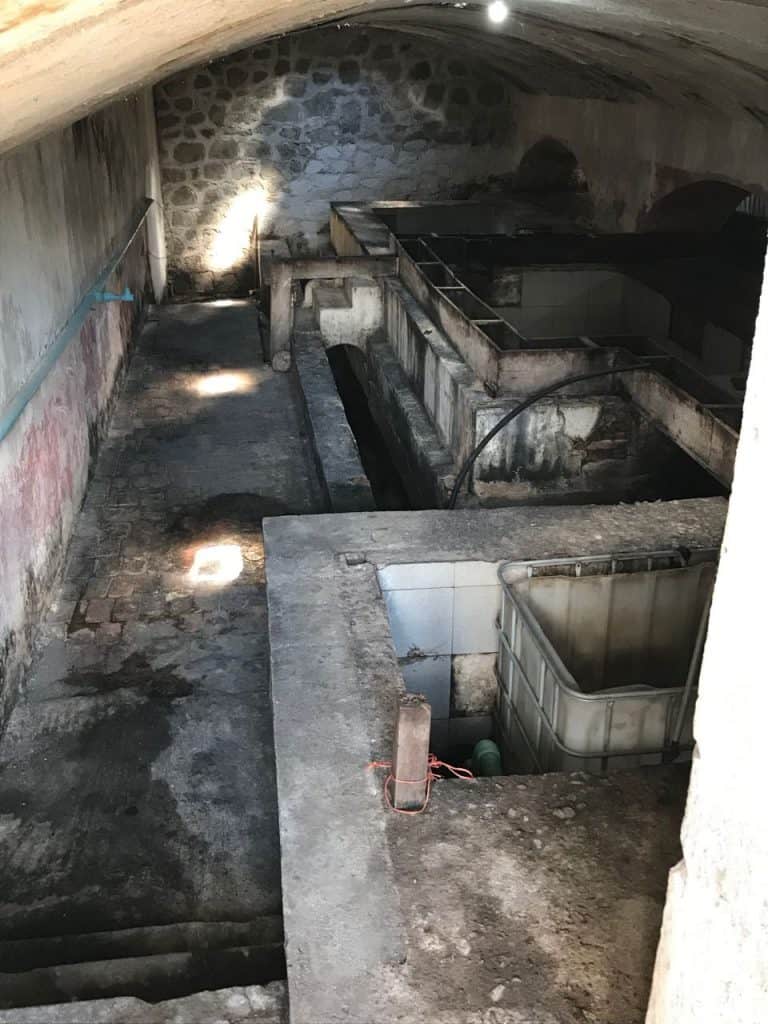
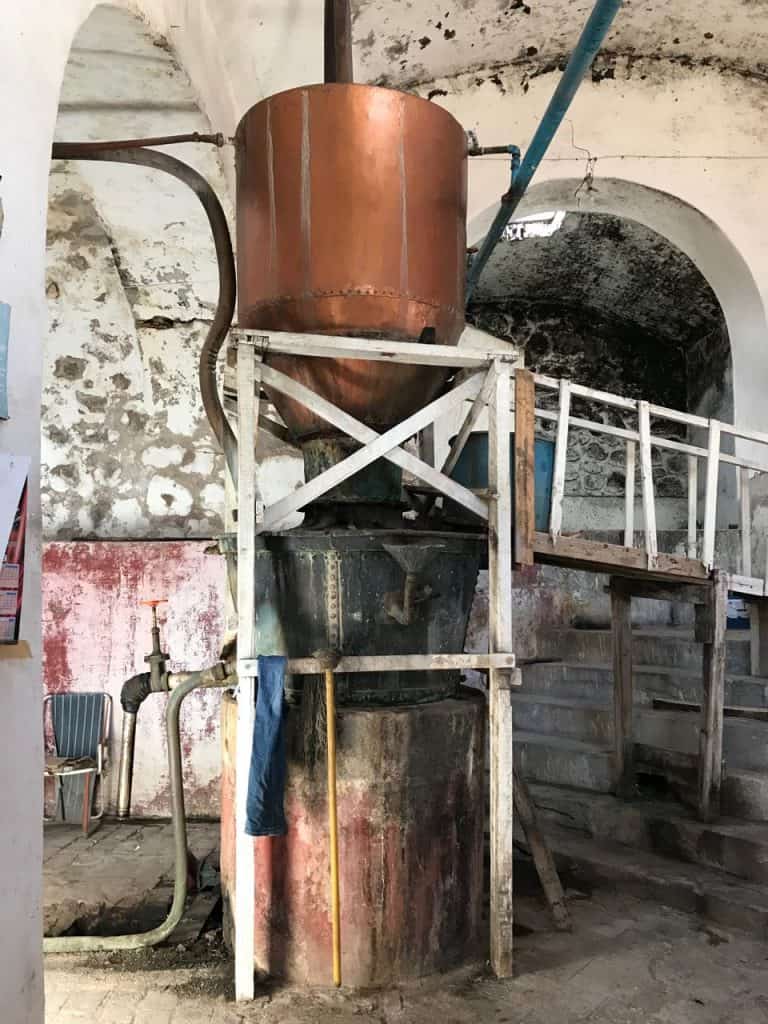
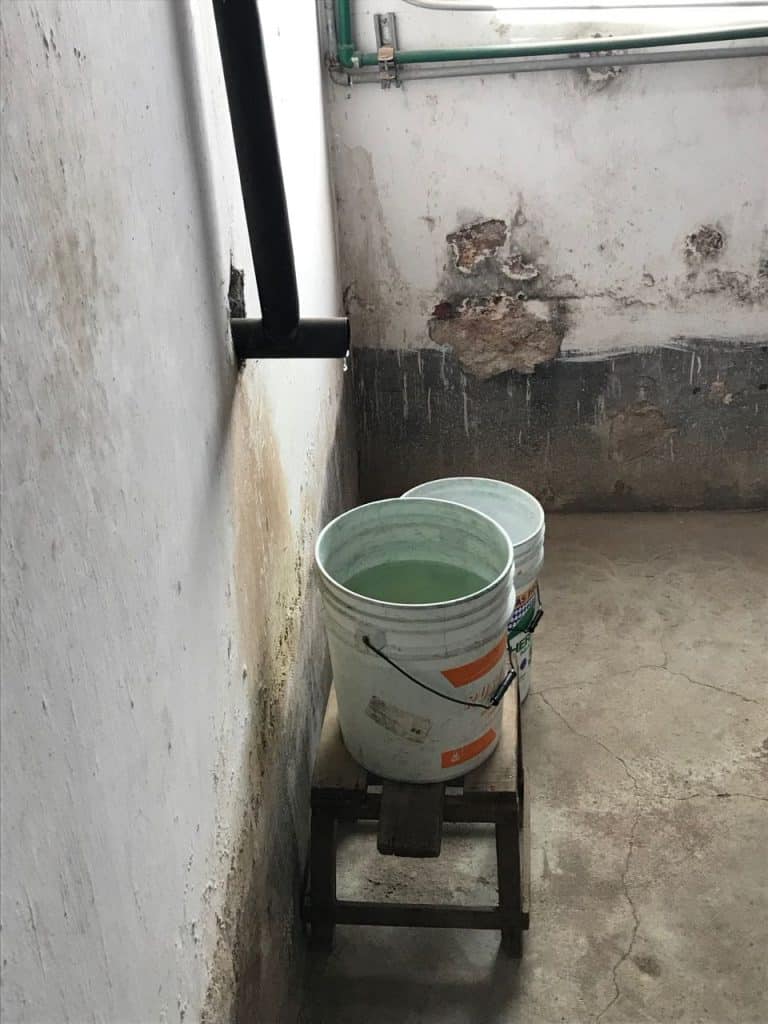
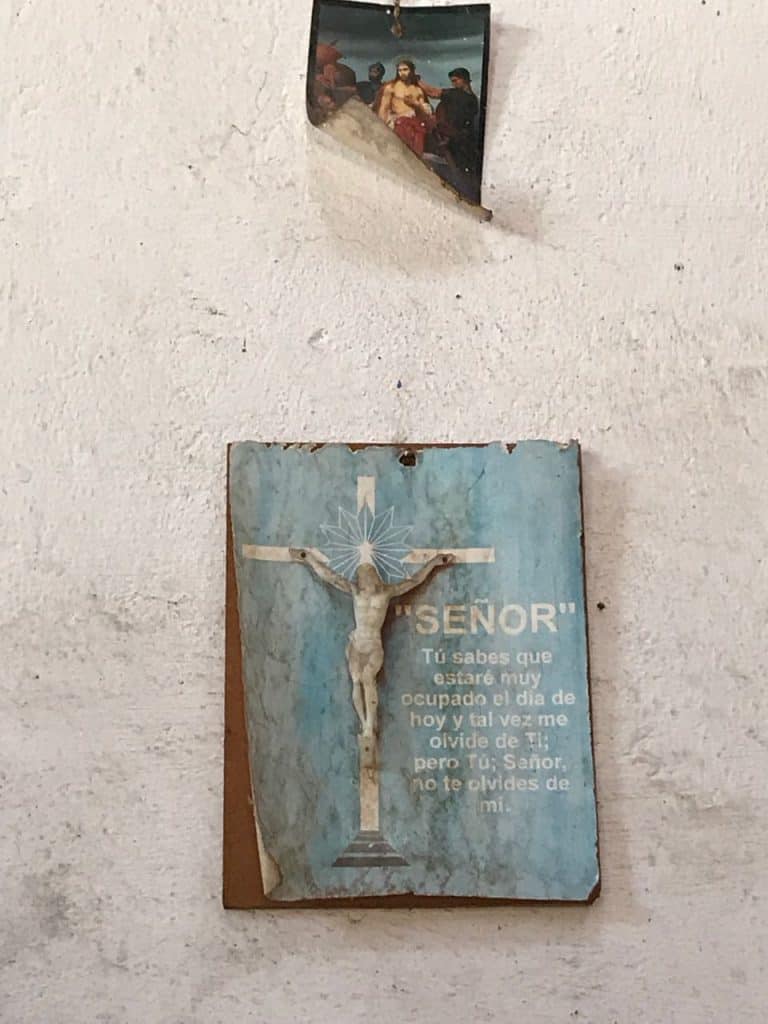
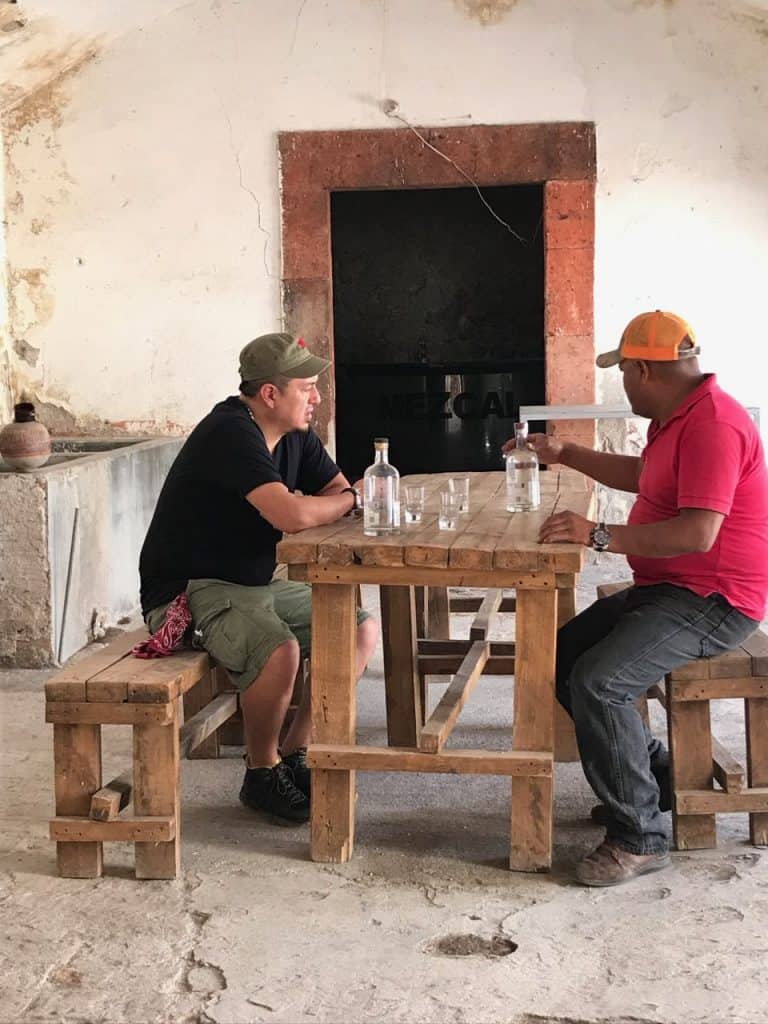
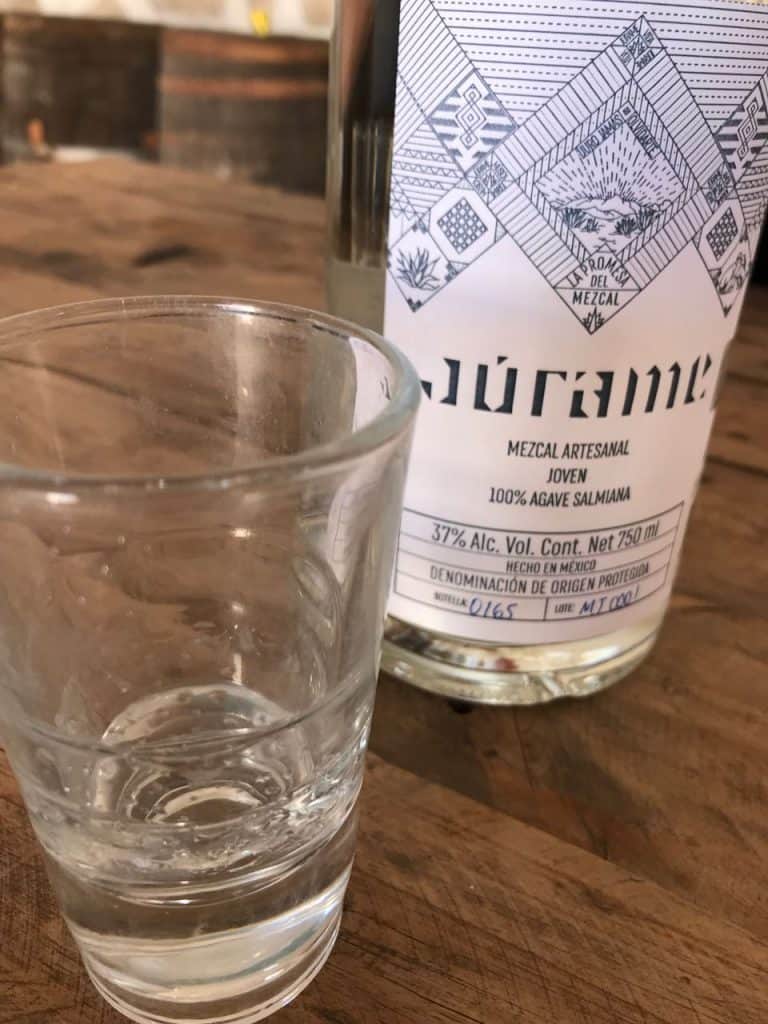
NOTE: This post has been updated to correct an error. Santa Isabel produced mezcal for Mezcales de Leyenda not Santa Teresa. Mezcales de Leyenda is working with Santa Isabel on a vivero project.

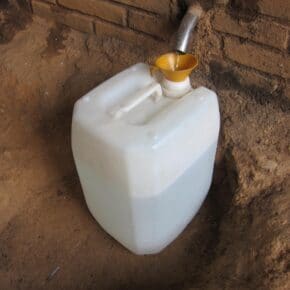
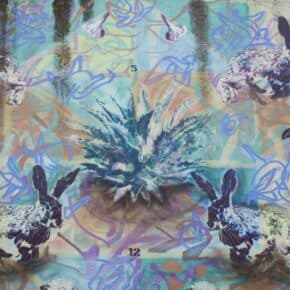









Susan, you are a gifted writer! I love reading about your adventures 🙂
This place is absolutely fascinating, and I haven’t even read part II yet.
I love the pictures too. I can now clearly understand why the SLP mezcales I’ve consumed taste so green. It’s a lush jungle out there.
Thank you Rimas! It was truly an incredible trip and so picture ready 🙂
Huh, I could have sworn that the Derrumbes and Leyenda SLP bottlings have different NOM numbers, but you say they’re both made at Santa Teresa?
Brett –
You are not imagining things! I am in the middle of a correction – Mezcales de Leyenda is made by Santa Isabel, Danny and I had a miscommunication as I was fact checking!
We have visited Santa Teresa a few times. We are taking friends with us in December and would love to show them an agave field/plantation along with a distillery tour. Any suggestions? We land in San Luis Potosi and head towards Rio Verde to our home. We don’t mind taking them to the distillery that we have seen, but would love to find another that is reasonably close to our path along with a field tour. Any suggestion you have would be GREATLY appreciated.
Terri –
You should reach out to Miguel Angel Silva – he is a treasure of a tour guide and help put together a trip to several other vinatas. You can reach him at info@autenticosanluis.com. Good luck!